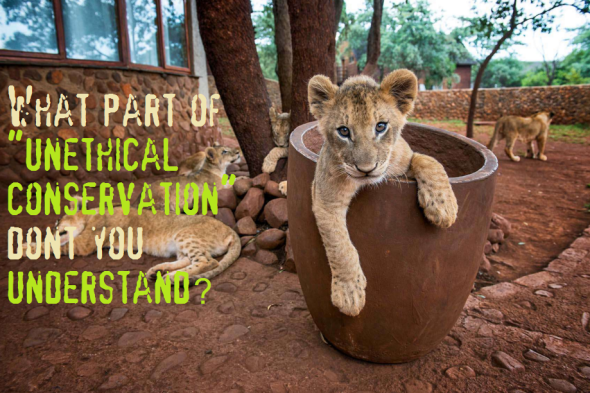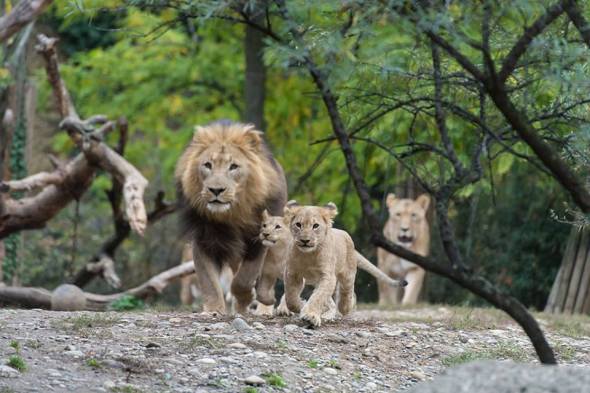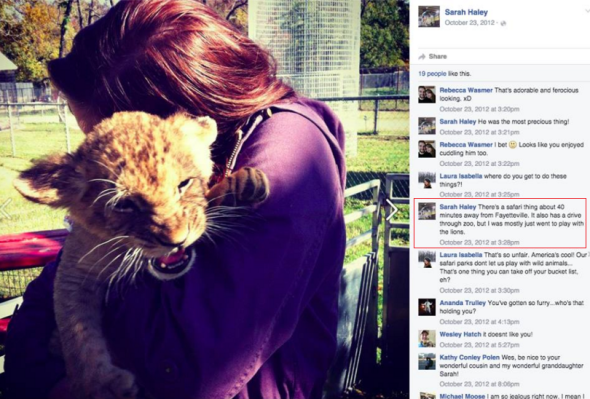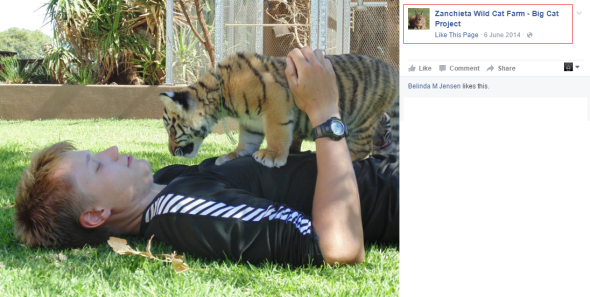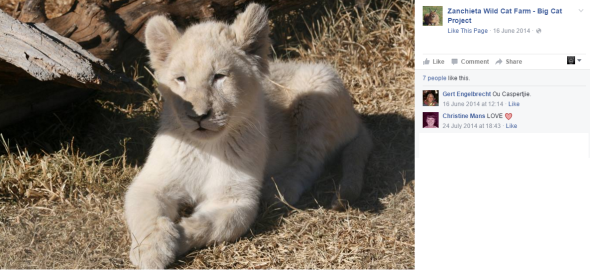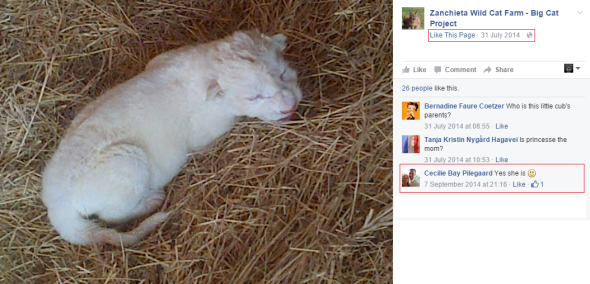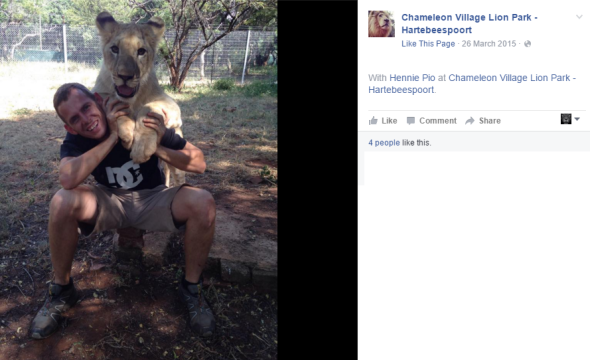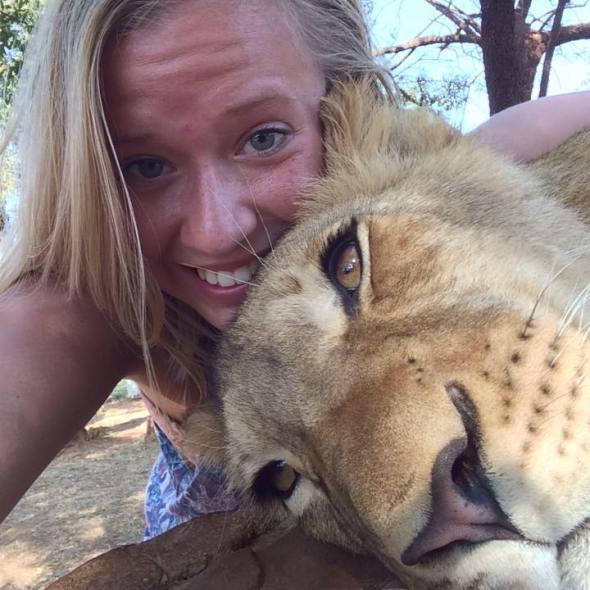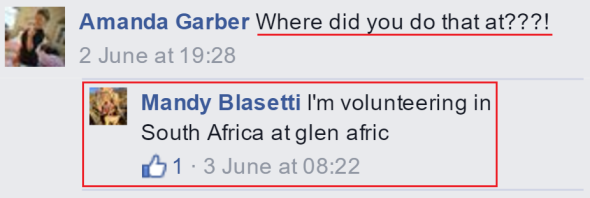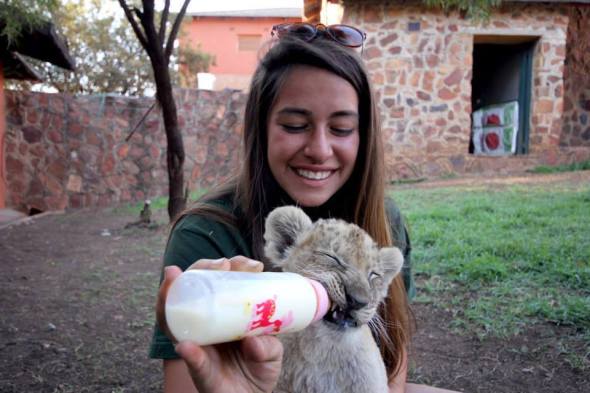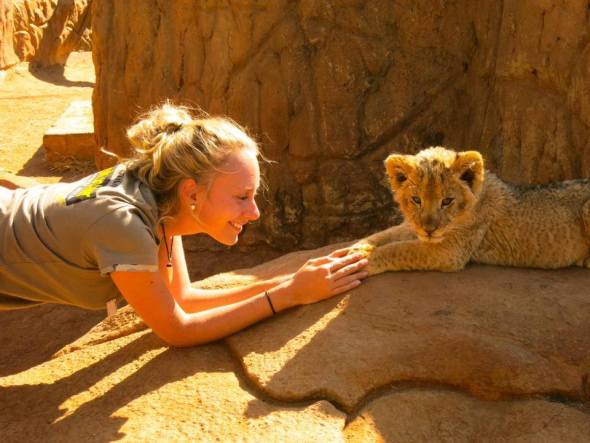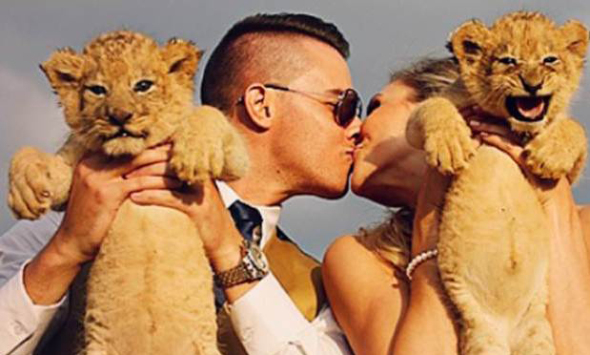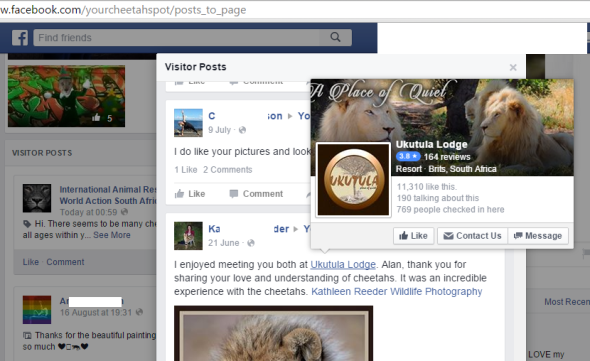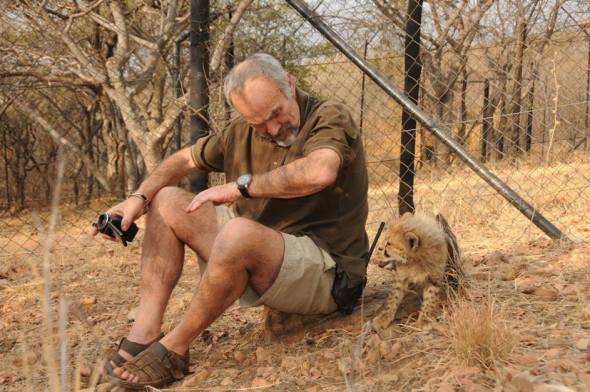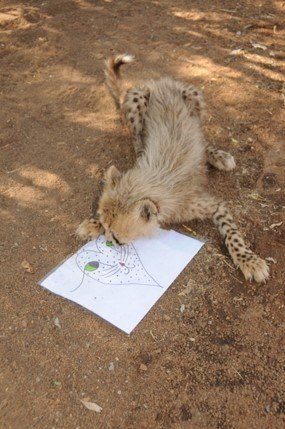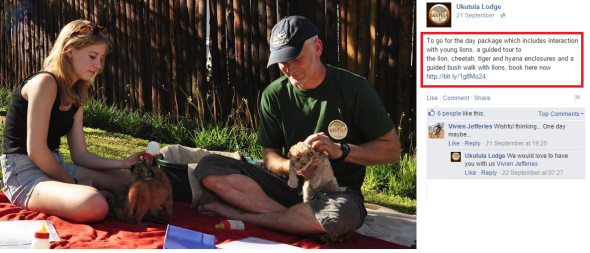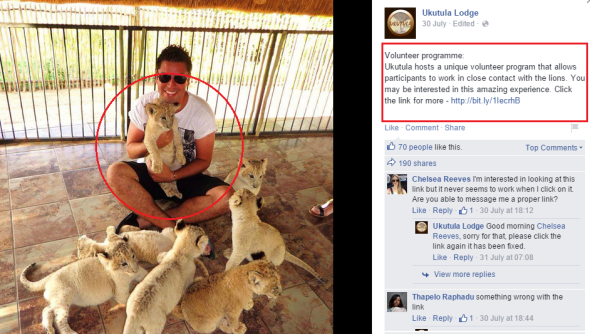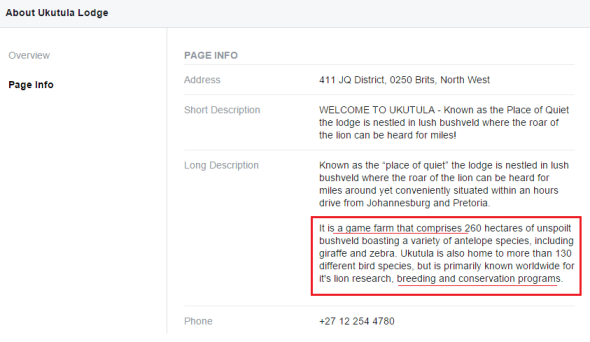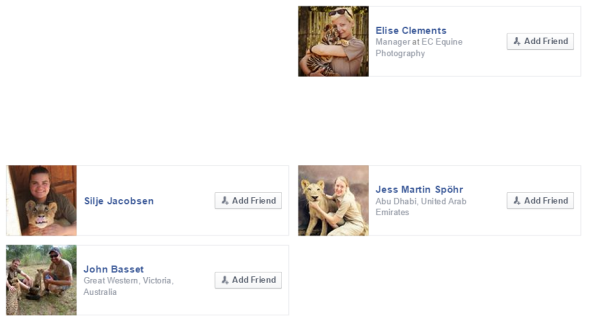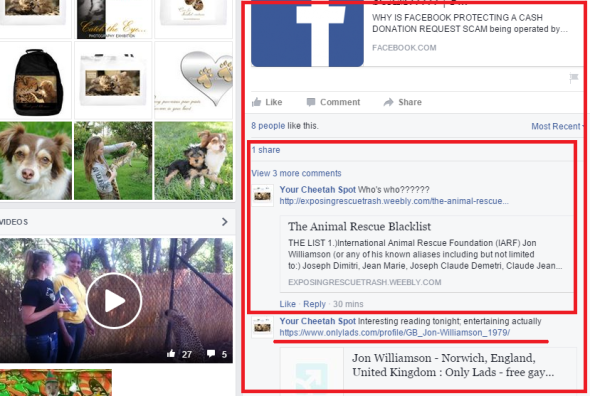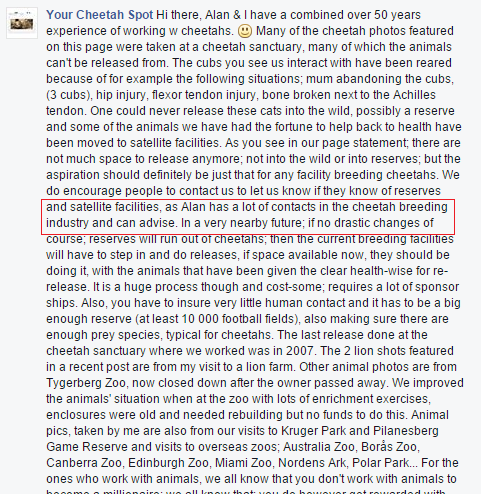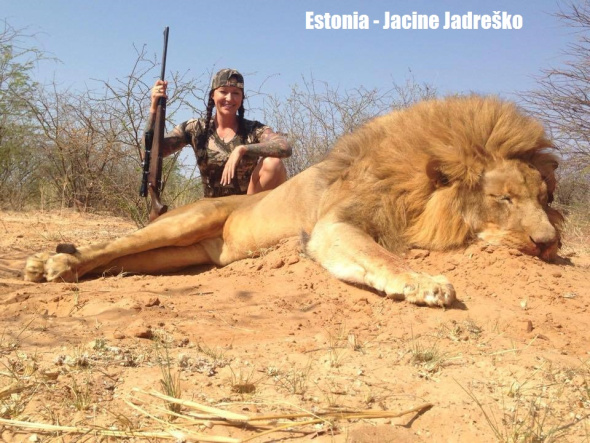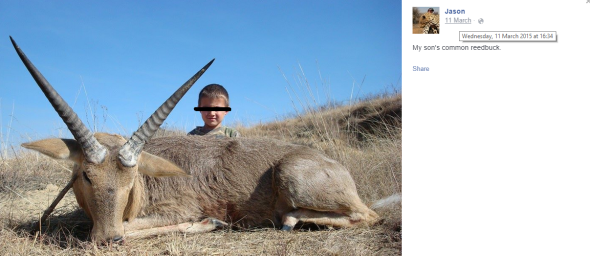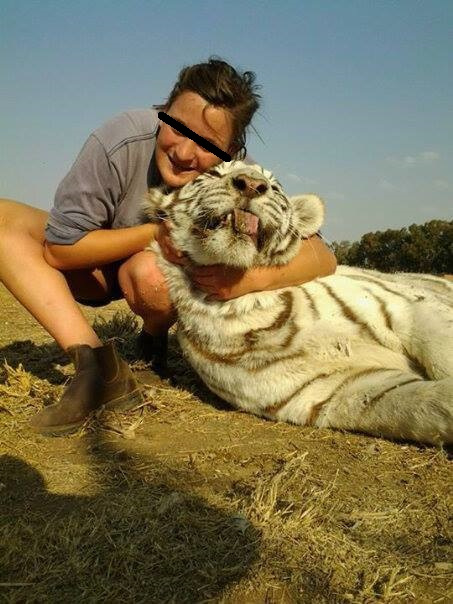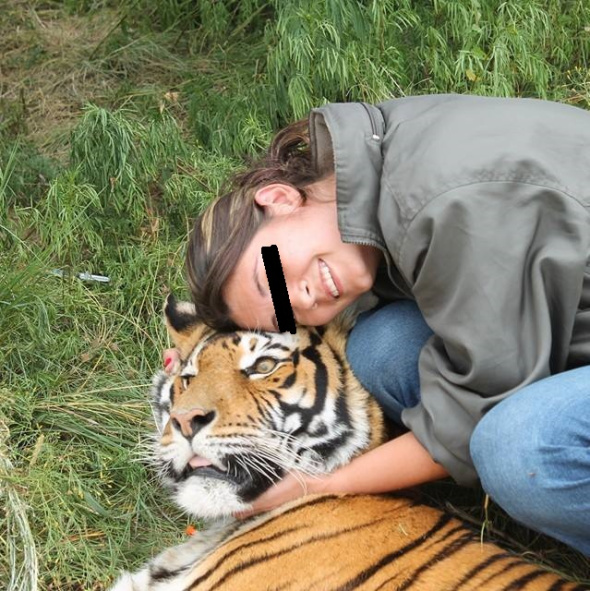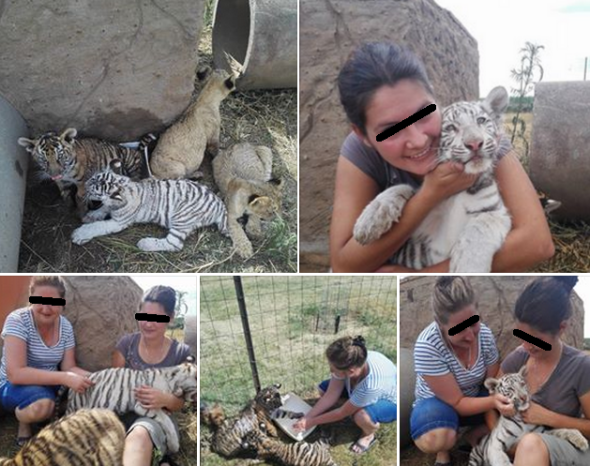SHOULD VIET NAM BE SLAPPED WITH TRADE SANCTIONS? | ILLEGAL WILDLIFE TRADE.
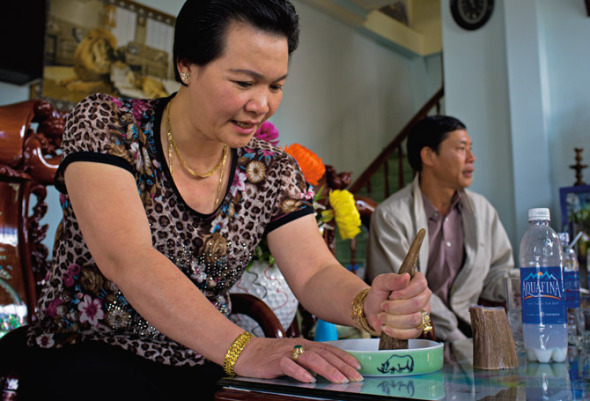
SHOULD VIET NAM BE SLAPPED WITH FULL TRADE SANCTIONS?
Since 2012 International Animal Rescue Foundation Africa’s (Cyber and Environmental Crimes Team) have been investigating Viet Nam’s illicit and illegal wildlife trade more closely than we’ve ever done. Back in January 2015 I Dr Jose C. Depre the (CEO) ordered a meeting with both units from the Environmental Cyber Crimes Team and External Affairs Unit); both focusing on the ground and online trade of illegal wildlife contraband. My aim was to increase both online and ground team investigations to begin breaking the back of these ruthless criminals throughout Asia and Africa.
International Animal Rescue Foundation Africa since founded have conducted 1,033 investigative surveys relating to all areas Viet Nam’s illegal wildlife trade (online and ground trade). However it wasn’t until January 2015 after uncovering a colossal rhino horn trafficking ring within Thailand and Viet Nam that we eventually decided Viet Nam had to be investigated more in-depth - all of which has resulted in a number of arrests and confiscation orders this year alone. The ongoing investigation was ordered due to a suspicion that the illicit ivory trade was increasing in Viet Nam too. Furthermore various organisations, media and press had stated that Viet Nam’s wildlife trade was actually decreasing, neither of which was true!.
I.A.R.F.A’s investigations aren’t just focused on Viet Nam. Specialist teams locate traffickers, suppliers and even poachers. These highly trained investigative officers move from one country to the next discretely monitoring and following various traffickers and kingpins (not forgetting befriending others too - which in many cases can be quite dangerous). While most of our investigations have focused primarily on Viet Nam, China, Thailand, Laos, Japan and Malaysia. Investigative officers have also been working within Uganda, Angola, South Africa, Namibia, The Democratic Republic of the Congo, South Sudan, Niger, Nigeria and Burkina Faso (among many other countries).
In four days time South Africa will be hosting the next Conference of Parties (CoP17). The Convention on International Trade in Endangered Species of Wild Flora and Fauna (CITES), that now hosts some 184 CITES signatories which will be debating numerous issues relating to both flora (plants) and (fauna) animals. The meeting will take place from the 24th September to the 5th October (2016). Back in 2011 Interpol estimated the extent of the illegal wildlife trade between $10 billion and $20 billion per year. This figure has gradually increased since 2014.
The illegal wildlife trade isn’t confined to just one country. Many countries around the world host wildlife trafficking and dealing routes extending to every continent. Conservationists say the problem is most acute in Southeast Asia. There, trade linkages to key markets in China, the United States, and the European Union; lax law enforcement; weak border controls; and the perception of high profit and low risk contribute to large-scale commercial wildlife trafficking. The ASEAN Wildlife Enforcement Network (ASEAN-WEN) ASEAN Wildlife Enforcement Network, supported by the U.S. Agency for International Development and external funders, is one response to the region’s illegal wildlife trade networks.
Figures from 2014-2015 have shown a startling increase relating to the funds generated from the illegal wildlife trade. Today illegal wildlife trade is estimated to be worth US$50-150 billion per year. The global illegal fisheries catch is valued at US$10-23.5 billion a year and illegal logging, including processing, at US$30-100 billion. (Source: Illegal Wildlife Trade 2014-2015). So as one can see no matter how many meetings we’ve been holding the illegal wildlife trade is skyrocketing to levels that we’ve never seen before. The question is though, how do we as environmentalists stop this, how can we force violating countries to take notice?
International Animal Rescue Foundation Africa have been calling on CITES for more than five years now to impose trade sanctions against offending countries. Unfortunately CITES and their signatories haven’t in our opinion taken a blind bit of notice, especially when it comes to Viet Nam that has been blacklisted as ‘possibly the largest threat to global wildlife on the planet?’. A trade sanction (which is what we want placed against Viet Nam and other offending countries) is a trade penalty imposed by one nation onto one or more other nations. Sanctions can be unilateral, imposed by only one country on one other country, or multilateral, imposed by one or more countries on a number of different countries. Often allies will impose multilateral sanctions on their foes.
From 2015 we (the organisation) have located a staggering $13.5 million (USD) of illegal wildlife contraband - most of which is being traded online via various forums such as Facebook within secret groups. (You can view a some of the contraband we investigative via our Facebook page here). On speaking to numerous traders to try and understand why this trade was being conducted on line; the traders have always stated: (Its more safer to trade, they can trade to a wider market without the need to carry their products over many miles. Finally, its quicker to trade into large private buy and sell forums anything that would be deemed ‘hot to handle’ such as Rhinoceros horn, elephant ivory, and pangolin parts (Etc).
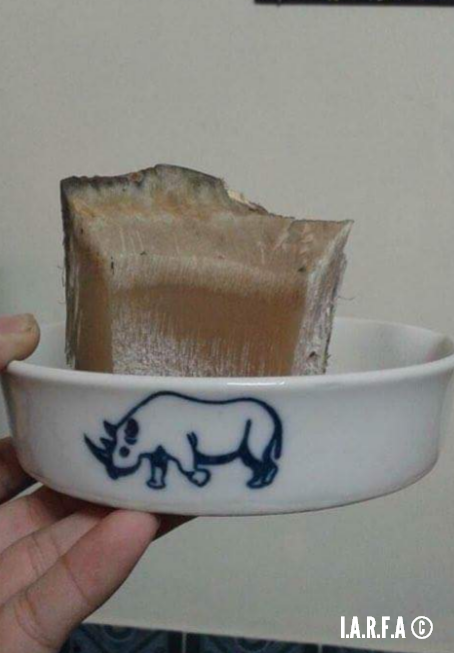
Image: Mr Tuan advertises the authenticity of recently smuggled rhino horn 11th August.
I.A.R.F.A have located over 21 African Rhinoceros horns traded illegally online and via ground markets since 2015 when we began our new anti wildlife trade operations and, 9 Indian One Horned Rhinoceros horns (all authentic). Mr Tuan, a Vietnamese national had no qualms whatsoever proving the legitimacy of his recently smuggled horn from South Africa. Anti Wildlife Trade Officers were invited to Mr Tuan’s Hanoi antiques shop of which in the back room were four recently poached Rhinoceros horns. I.A.R.F.A Anti Wildlife Trade Officers posing as interested buyers were offered the above in liquid form as a ‘so called aphrodisiac’.
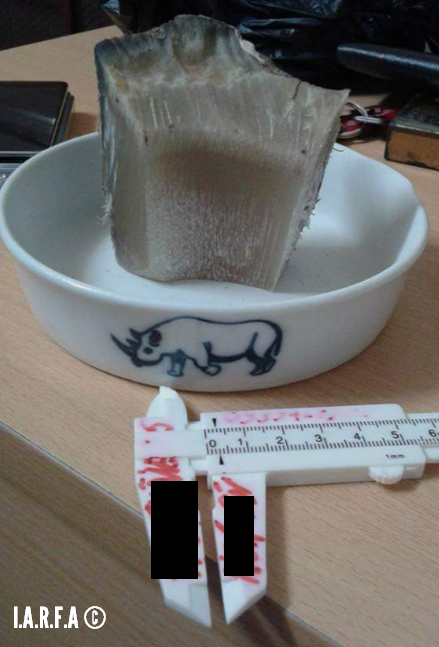
Image: Mr Tuan prepares to sell this horn to I.A.R.F.A investigators.
The above horn was measured up, weighed and offered to I.A.R.F.A investigative officers for a total of $4,000(USD). While the officers declined a small sample was purchased so that we could test the authenticity of this horn. Vietnamese investigative officers working with (I.A.R.F.A) the very next day took the sample to Viet Nam National University of which tests later revealed the horn originated from an African Rhinoceros based on the horns DNA.

Image: One of Viet Nam’s many Rhino horn kingpins. Mr Tuan.
While we don’t make a habit of exposing ‘wealthy wildlife trade kingpins’. As we’re nearing the (CoP17 summit) we believe its time to begin naming and shaming some of the dons behind this ruthless trade in order to communicate our message far and wide to all CITES members that enough is enough, sanctions must be placed against all violating countries. Mr Tuan doesn’t just deal in large quantities of authentic Rhinoceros horn neither. Ivory, pangolin parts and the critically endangered Indochinese Box Turtle also fill Mr Tuan’s home and antiques shop. So Mr Tuan if you’re reading please do say cheese.
Meanwhile Mr Tuan is just a small piece of the ever-increasing illegal wildlife trade iceberg. In one group that we’ve been monitoring for over two years that’s yielded 9 arrests thus far this year (which we cannot name for legal reasons). Some 33,000 individuals all over the globe are trading ivory, tiger parts, bear claws, pangolin scales and critically endangered moon bear skins (among many other items). The vast majority of these online traders that lead investigative officers to some ground locations are either Vietnamese, Chinese, Malaysian, Indonesian, Indian, Belgium, Australian, American and Canadian traders. One trader was even located in London W12, and two others dealing from Paris, France.
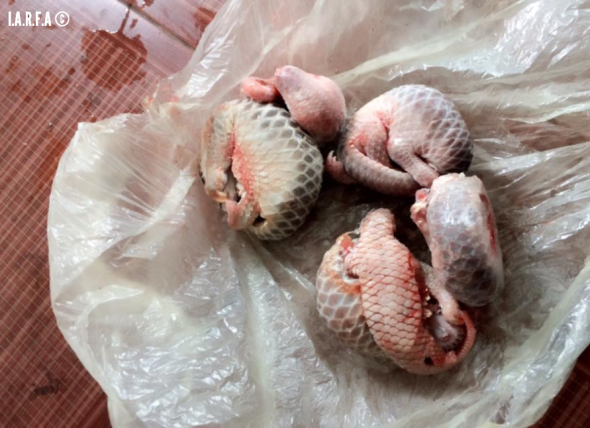
Image: Thailand smuggled endangered pangolins.
Rhinoceros horn is the least likely wildlife trade product that we come-by, simply because of its price, rarity, and the fact so many people around the globe are now putting their foot down relating to this animal part. Unfortunately its not just Rhinoceros horn that we witness being sold illegally online and on the ground. Mr Tu Su whom lives in Ha Tan, Viet Nam was clocked on the 19th August 2016 trading these smuggled pangolin parts online illegally.
Every year there are numerous arrests throughout Asia and convictions relation to pangolin poaching and trafficking, however no sooner is one dealt with - another smuggler and trader rears their ugly head, and can you blame them? All four Asiatic pangolins are now considered extremely rare to the point they’re nearing extinction. Furthermore as the species becomes more rarer - prices increase. These 6 pangolins were trading between $600(USD) and $1000(USD) each. Mr Tu Su has has quite a reputation relating to pangolin smuggling - so for the record below is Mr Tu Su’s face.

Image: Mr Tu Su - Pangolin smuggler and trader.

Image: Mr Tu Su - Pangolin soup.
All 8 species of Asian and African pangolins are ‘listed under Appendix II of CITES’, which means trade is regulated and monitored under CITES, (permits are required from exporting countries for any trade activity). To issue a permit, the exporting country must determine that this activity will have no detriment to the wild population.
As an additional protective measure, the CITES authority passed a (zero export quota for the four Asian species, which bans all commercial trade in these species). However, other purposes (scientific, research, etc.) can still be authorized by permit. For the four African species, there is no zero export quota, which means commercial trade is not prohibited, but permits are still required. Pangolins are also protected in their range states by domestic wildlife laws.
So Mr Tu Su if you’re reading then please note you’ve violated both domestic and international law, we’re holding your details too!
International Animal Rescue Foundation Africa have increased investigations relating to the illicit wildlife trade. Our two main areas of focus is that of the Rhinoceros horn trade and the ivory trade. Since 2015 our investigations surrounding the illegal ivory trade (have located a staggering $6 million(USD) of ivory smuggled from Africa into Thailand, China, Malaysia, Singapore and, Viet Nam.
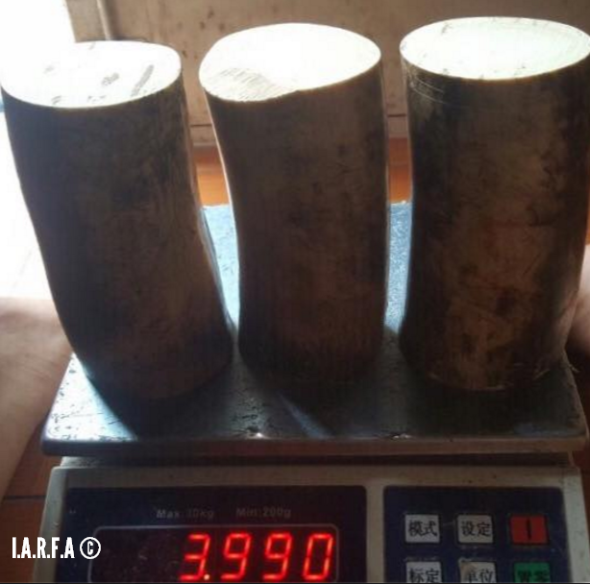
Image: Ivory trafficked from Tanzania onto Viet Nam.
Ivory trader and trafficker Mr Ban Me from Buôn Ma Thuột, Đắc Lắk, Vietnam was observed on the 16th August 2016 trading the ivory above online in one of three secret Vietnamese and Chinese ivory trading online forums. The ivory above is estimated to be around $6,500-$8,000(USD) for the lot.
Mr Ban Me makes no effort to conceal his lucrative online trade neither. When investigating this trader and trafficker we went back through many months of posts within the secret forum, then managed to locate Mr Ban Me who is aged around 35-30 years old. On locating the trafficker/trader it appears from the online evidence that ivory is coming in quick, measured up and weighed, of which either himself or friends then soon after set about to carve the ivory into jewelry.

Image: Ivory measured up and weighed for sale and carving.
Since January 2015 (International Animal Rescue Foundations) Environmental Crimes Officers have underneathed new trading trends relating to the ‘online wildlife trade’. As explained in previous articles most traders nowadays will take delivery of illegal wildlife contraband. From there the wildlife parts are then photographed (as seen in the image below). Traders will either then set up a ‘pseudo Facebook profile’ or already have one in place. The Facebook profile will act as a mobile online shop.
Most traders and traffickers we’re investigating today use this method of online illegal trading. They know by using a throw away or cheap (non-traceable cell phone) that any chance of them being located is slim. Traders are rarely seen selling in bulk on the streets of Viet Nam or over the borders in other Asian countries. Buyers and traders feel safer trading, swapping or trafficking items uploaded to the internet.
Mr Ban Me takes delivery of a large quantity of ivory every month from Africa, most of which has been illegally trafficked into China. Once carved the items are then photographed again to sell online within secret trading rooms to hundreds if not thousands of people. The ivory seen above and below was ‘advertised’ to an audience of over 33,000 individuals.
So as you can see its incredibly difficult for us or any investigate organisation to track in quick time where these products are originating from and ending up. Traders use these rooms online because they know selling to a wider-ranged audience products can shift quickly. Unfortunately for Mr Ban Me we have his contact details, his address, his cell phone numbers, and even know who is selling too and buying from.
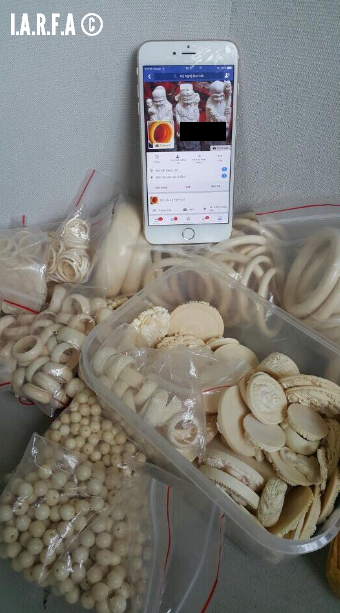
Image: Carved ivory on sale from the tusks observed and intercepted online.
Another shocking ‘concern’ is that Mr Ban Me ‘could be purchasing ivory from Thailand elephant traders’. I.A.R.F.A have known for many years now that ivory tusks are being shaved down from Asiatic elephants. A trace of Mr Ban Me’s cell phone images revealed further evidence that showed himself photographing Asian elephants onto his ‘Facebook ivory profile’. Should this be true - it will prove to be further damning evidence that elephants are being exploited within Asia for the ivory trade on a much larger scale than previously documented.
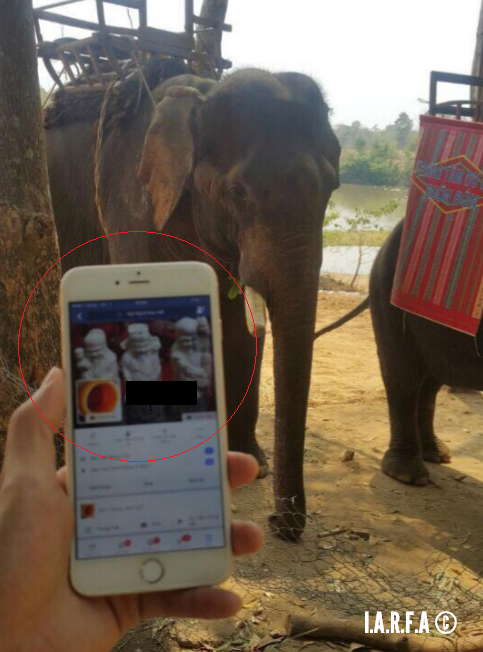
Image: Ban Me photographs Asian elephants onto ivory Facebook profile.
The only image we have of Mr Ban Me is that of his wood workshop in Viet Nam (pictured below). The entire Facebook profile (like many thousands more we have and continue to observe) depicts that of ivory and few rose wood products. The question is though - who’s supplying this young Asian man with ivory? I.A.R.F.A have demanded that Facebook and the F.B.I take action against this illicit trade, and even supplied the Social Media platform with an 11,000+ petition signature however as yet nothing is being done to combat this trade?
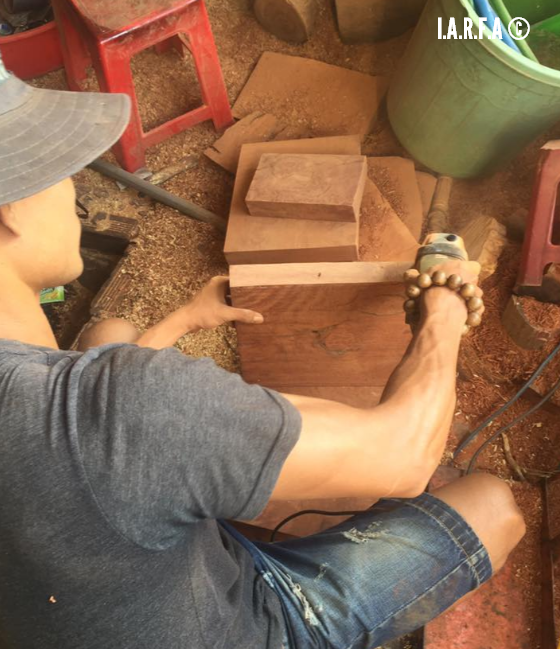
Image: Mr Ban Me carving wood in Viet Nam. where ivory is also traded.
Back in December 2015 International Animal Rescue Foundations (Environmental Crime Officers) passed hundreds of pages of evidence onto international law enforcement agencies and Interpol relating to illegal wildlife traders. There have been numerous arrests due to our investigation and, from that investigation other individuals have been looked into resulting in new investigations and arrests too on a global scale. However no sooner is one trader stopped - another one pops their ugly head up from the sand and begins trading.
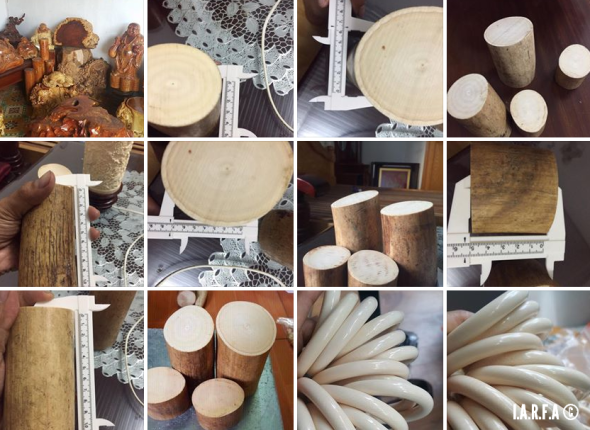
Image: Mr Ban Me’s ivory Facebook shop profile - ivory tusks, and carved ivory jewelry.
A further trader that ‘openly admitted to I.A.R.F.A Environmental Crimes Officers tried to sell these tusks (pictured below) to an I.A.R.F.A investigator. Going under the name of Mr Thường, from Hanoi Viet Nam, he like Mr Ban Me made no effort whatsoever to conceal his hoard of illicit ivory - most of which was from African elephants. Furthermore he too like Ban Me had created a ‘pseudo Facebook profile to trade illegally elephant ivory’.
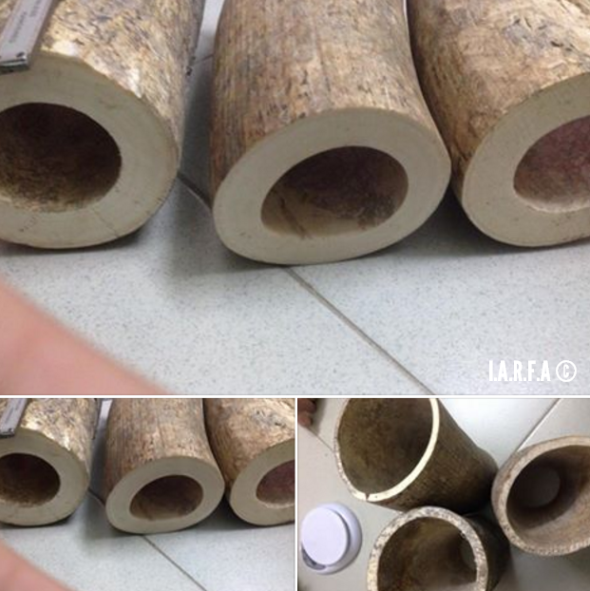
Image: One of many thousands of online Facebook ivory trading profiles.
Viet Nam banned the ‘domestic ivory trade back in 1990’. Furthermore there has been an ‘international ivory trade ban in place since 1989. Unfortunately while these bans have been in place - there are loopholes within some ‘countries domestic trades’ which permits them to trade ‘legally elephant ivory despite international and domestic bans’.
Furthermore ivory can to some extent be sold legally within Viet Nam should the products be antique or purchased before the ivory trade bans. However neither of our investigative officers have located any evidence to prove any of the ivory we’ve located was purchased/obtained legally before any bans were implemented. Damning evidence sent to law enforcement agencies around the globe also proves that ivory is being smuggled from Africa onto Japan and China then back into Viet Nam - Three countries known for their continued ivory trade violations.
While the ivory trade continues to rage out of control there are unfortunately many other illicit and illegal wildlife trades that are increasing within Viet Nam. I.A.R.F.A have noticed a very ‘alarming spike’ of bear parts, mostly moon bears for sale online and on the ground. Environmental Wildlife Crime investigative officers located this species [pictured below] - Ursus thibetanus on the 8th September 2016. The species is identified as the Ursus thibetanus and is listed as [vulnerable] on the (IUCN RED LIST) of threatened and near endangered species.
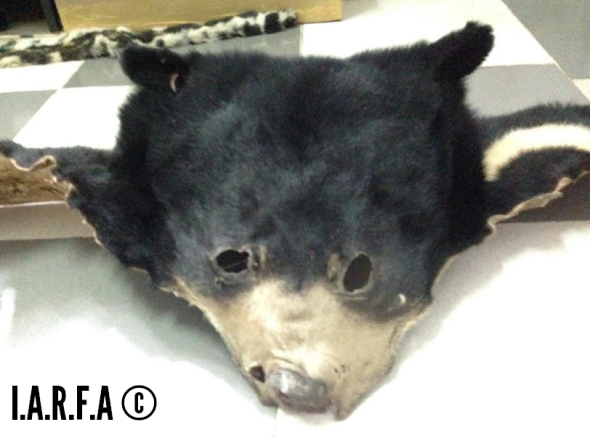
Image: Ursus thibetanus (Moon Bear parts) Viet Nam (2026).
Moon bear pelts, teeth, claws and bear bile are not exactly an uncommon species of animal to be located wihtin Viet Nam’s numerous medicinal markets, although its not common to view the species as it is above on sale within open markets. Bear bile has not decreased in sale on the TCM markets whatsoever in my humble opinion, in fact we (the organisation) hold very recent and damning evidence to prove that bear bile farming practices are sill very much operational. So damning that it does in fact bring many Non Profit Organisations into question with regards to their allegations of practically stopping this trade, when clearly its not being stopped!
Due to many counterfeit animal products on the markets, before any investigation is undertaken - Environmental Scientists will conduct routine examinations of purchased bear bile products to check their authenticity. These examinations are undertaken to store and maintain evidence files, to secure closures of illegal markets or, for further secondary investigations. I.A.R.F.A Wildlife Trade investigative officers located the following bear bile products on the market in Viet Nam.
A kilogram of farmed bear bile might cost $240, while the same amount from a wild bear could cost $15,730. Investigative officers were told the bile seen hereto in the image below was from wild bears, however we highly doubt it due to the lack of Asiatic black bears in the wild. Each bottle below was offered to investigative officers for just over $200(USD). I.A.R.F.A Wildlife Trade investigate officers did purchase three at a price of $600(USD) which is considered cheap. The ‘liquid was tested at the Nong Lam University of which proved to be 100% bear bile.
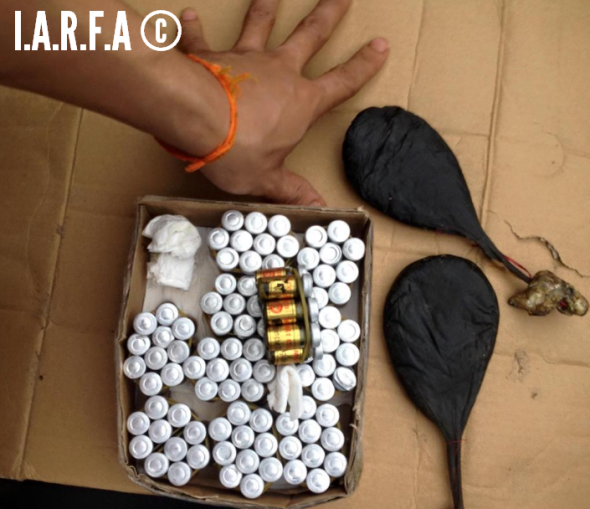
Image: Asiatic Moon bear bile in mass production with gall bladders.
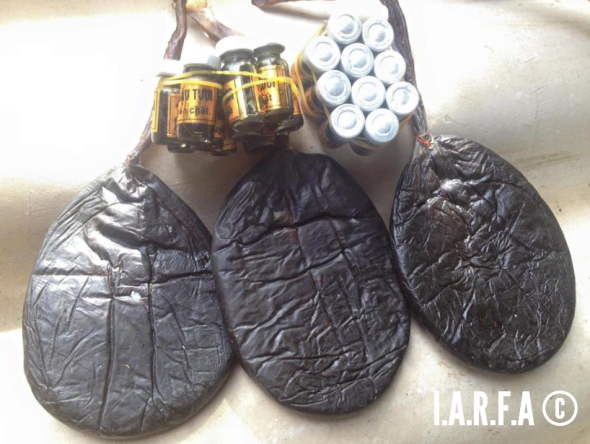
Image: Plastic wrapped gall bladders and bile.
Bear bile does not whatsoever hold any medicinal properties whatsoever, if anything consuming bear bile can actually increase health complaints. The barbaric practice is ‘illegal in China and Viet Nam’, Viet Nam banned bile production back in 1992, sadly the trade still goes on to some extent. Fortunately Viet Nam have stated they’ll be eliminating this horror come 2020, however we’re not holding our breaths just yet.
Mr Nheo who is aged around 21 years of age from the Huong District, living in Hanoi Viet Nam (pictured below) if you’re reading my friend you may want to stop trading pangolins, tiger parts, bear bile, tiger teeth, bear teeth and claws and ivory today. Bear bile hosts no medicinal properties whatsoever so why you’re trading this vile product - which leads to the destruction of bears for we don’t know..
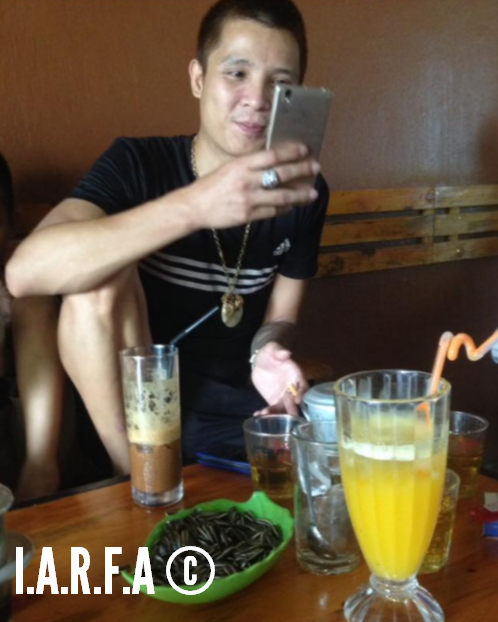
Image: Mr Nheo - Illegal wildlife trader from Hunong District, Viet Nam.
At the last Conference of Parties Summit (CoP15 - Thailand), Viet Nam made a promise to crack down on the countries illegal wildlife trade back in 2013. Although there was no actual deal made, Cites signatories did categorically state that should Viet Nam want any say in the ‘legalized international trade of rhino horn’ the country must clamp down on illegal wildlife trades and markets. I was at the last CoP summit of which Viet Nam agreed it was time to reduce their illegal trade markets - or face the consequences.
The whole purpose of this article and many others is to ‘highlight Viet Nam’s lies; the country hasn’t in my opinion made any progress to reduce their illegal wildlife markets, especially that of (critically endangered species). Yet Viet Nam has been identified as one of the leading countries to be approaching Cites for the ban to be lifted relating to the (international rhino horn trade). I ask myself daily - how is it possible for a country to control any legal trade if they cannot control the illegal trade of wildlife contraband?.
I.A.R.F.A. Environmental Crimes officers working online and on the ground furthermore have noticed a colossal spike in the number of tiger parts and dead tiger carcasses sold within Viet Nam’s illegal wildlife trade markets. The image below depicts a trader that is privately trading tiger teeth. While the quantity of tiger teeth wihtin the image (below) may seem small. I.A.R.F.A Environmental Cyber Crimes officers have been carefully monitoring this trader for well over a year. The vast amount of tiger parts he’s trading is out of this world.
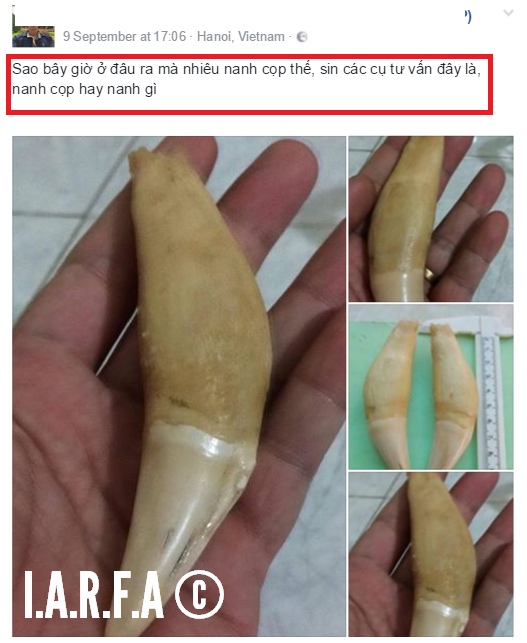
Image: Tiger teeth for sale- Online Secret Wildlife Trading Forum.
I.A.R.F.A have reported various tiger traders in Viet Nam to INTERPOL and local enforcement agencies. However as explained these bloody sickening traders, traffickers and animal killers continue to pop up time again. Most if not all the tigers that we are locating for trade (illegally) were ether captive tigers, smuggled tigers/parts from China and/or Thailand. While other specimens have actually originated from (pathology/veterinary universities inside of Viet Nam).
Three months ago I.A.R.F.A working with overseas enforcement experts concluded - the rare Asiatic leopard we located within a wildlife traders apartment had originated from a veterinary university in Viet Nam. Meanwhile the tiger skins/parts below have originated from Thailand. The question is though from where, who is supplying this amount of tigers and parts to traders within Viet Nam?
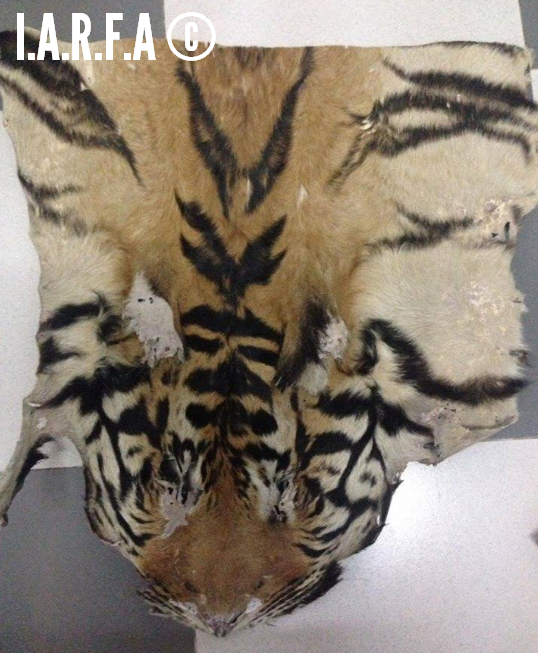
Image: One of many tiger skins offered to I.A.R.F.A investigators September 8th.
International Animal Rescue Foundation Environmental Cyber Crimes Officers was offered this tiger pelt for $1,060(USD). The trader that operates under the name of ‘Mr Coivodich’ also deals in ivory, threatened Rhinoceros hornbills, and bear bile. Furthermore we have been monitoring a very ‘concerning trend relating to tiger skin wallets. Captive bred tigers are slaughtered of which their skins are turned into wallets - a craze that is now becoming incredibly popular throughout Viet Nam. Tigers in Viet Nam are supposed to be bred for conservation purposes only. Clearly though from the images below this is not the case.
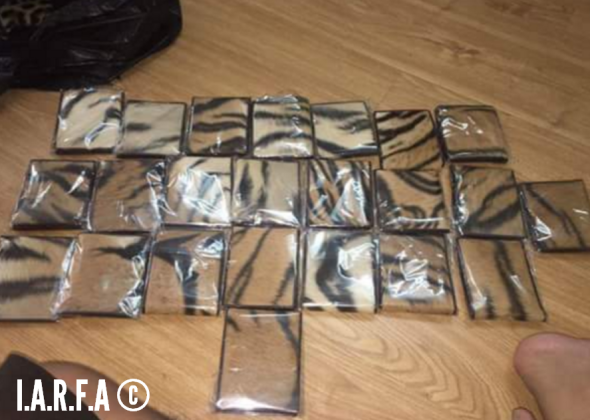
Image: Real tiger skin wallets packaged and ready for sale in Hanoi.
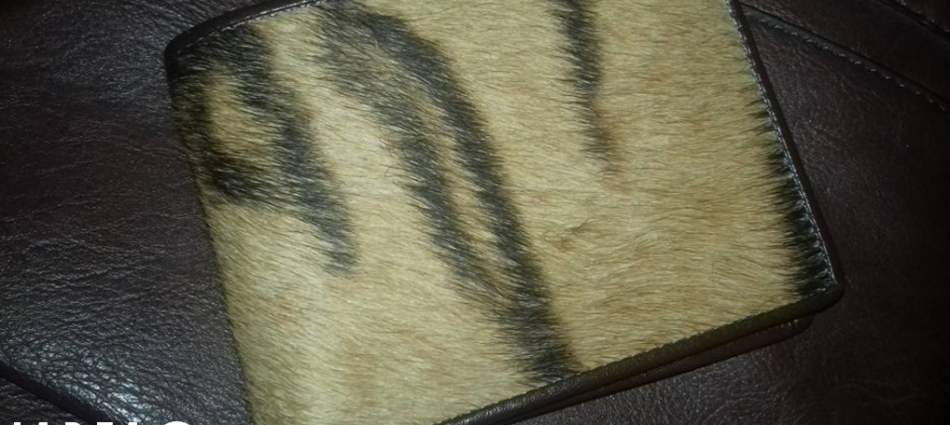
Image: Unpacked real tiger skin wallet, priced at $70.00(USD) each.
As explained tigers are supposed to be used for conservation purposes only. However we have located worrying evidence that makes Tiger Temple look more like a walk in the park. A famous Thailand Actor below is seen cuddling a drugged tiger at the Sriracha Tiger Zoo which we believed was a zoo inside of Viet Nam. (See image below). Unfortunately the tiger and this image eventually led back to Thailand, of which this zoo has been named as a horror ground. Would it be wise to assume that tigers are originating from this zoo and ending up within Viet Nam’s wildlife trade? We don’t know. What we do know for sure though is this zoo is now under close scrutiny.
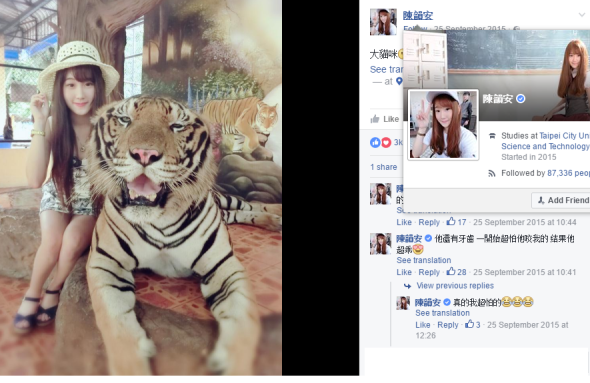
Image: Chen Yunan coaxes drugged tiger in Thailand.
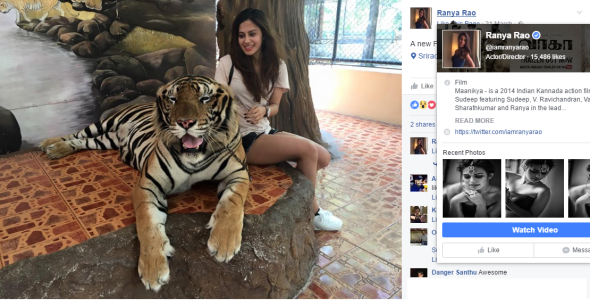
Image: Ranya Rao coaxing drugged tiger in Thailand.
International Animal Rescue Foundation’s Environmental Crimes teams have been working on our new anti wildlife trade project since 2015 being now the ninth major project that we have conducted in the past three years. Most of the evidence we are locating in relation to wildlife trade violations isn’t always within China - a lot of these violations are in fact within Viet Nam.
We are now under four days away from the next Conference of Parties (CoP17) to be held within South Africa, Johannesburg. CoP 17 has been set to be the largest summit held, and as such we may see countries such as Viet Nam asking Cites signatories to agree to a lift of the international trade ban in Rhinoceros horn. Every article that we’ve published in relation to Viet Nam shows the country cannot be trusted with relation to the international rhino horn trade. Every article we’ve published also shows numerous violations of local and international wildlife trade laws.
So the question remains. Is it now time to implement at CoP17 full part of full sanctions against Viet Nam to protect our local and international wildlife? I believe its now time. The evidence in front of you clearly shows Viet Nam’s refusal to act on their illegal wildlife trade markets. So how much more do we have to put up with before everything is eventually gone? Should Cites signatories lift the rhino horn trade ban we’ll keep to our promise. Being all those we know dealing in illegal wildlife products at high end market level will be named, shamed addresses published and that evidence released to the public. Video recordings, audio, images - everything.
The balls now in Cites court - Don’t underestimate us, we may be quiet - but we’ll stay quiet for only a short time before we begin naming and shaming.
Dr Jose C. Depre. PhD. MEnvSc. BSc(Hons) Botany, PhD(NeuroSci) D.V.M.
Environmental, Botanical & Human Scientist.
What Part of Unethical Conservation Don’t You Understand? | Endangered Species Monday Special.
ETHICAL OR UNETHICAL
Last week we wrote an article in relation to the GoEco student/tourist travel firm, and the Zanchieta Wild Cat Farm. As usual we came under some pretty heavy criticism as apparently we were yet again in the wrong. Within many of the emails that we have received, students have literally blasted us for depicting themselves holding, petting or interacting with African predator cats, many of them cubs that seem to have no mother insight, and could be re-rehabilitated into the wild to boost wild predator populations up.
Back in 2015 from January to December we rolled out yet again another mass educational and awareness campaign aimed at mainly students and overseas tourists that paid up to $1,200USD for a two week visit to the many petting farms, lodges and resorts on the African continent, that was projected onto our main Facebook platform.
I.A.R.F.A’s educational and awareness campaign (2015) saw over 200 students give up this practice (one of many articles you can read here). Furthermore Zebula Golf and Spa Club that was hosting lion petting activities withdrew the practice, and removed adds from their main website. An African zoological garden removed its advertisement for cheetah petting, thus later ending their petting experiences, and finally a painter and artist that was promoting such activities eventually stopped.
The campaign also saw a decline in profit in relation to the Ukutula Game Lodge, and customer star rating, and less students visiting from 2014-2015. Amanzi Travel located within the United Kingdom have also allegedly withdrawn their lion petting advertisements focusing more on ethical conservation. (Amanzi Travel are still the focus of our attention though). The list goes on, and frankly we’re not going to stop until these practices are ceased immediately.
From 2014-2015 the organisation Blood Lions pounded the streets and cinemas (internationally) in relation too the petting and canned hunting industry which has seen quite a significant response from the petting and hunting fraternity too). In the wake of much controversy France has implemented an immediate ban on lion trophies being brought into the country. Now PHASA are at the throats of (Sapa, reported by Blood Lions) demanding the South African Predator Association immediately responds to the canned hunting problem that’s sparked fireworks around the globe. (See video below).
Unfortunately, despite the mass effort that we and others have placed into these projects, students, tourists, even trainee zoologists and veterinarians still thrash it out with us, believing that what they are participating in, is all good fun and doesn’t do the animal any harm whatsoever. Below are just a handful of the lame excuses that we read every week emailed to us in anger.
LAME RESPONSES FROM TOURISTS / PREDATOR PETTING
“None of these cubs were harmed and are all living a peaceful happy life”
“Your information is wrong, petting doesn’t harm the cubs, the cubs don’t have a mother, we’re helping them and their cuddly, so what!”
“Please research your information before posting my image, there is no hunting on this farm whatsoever, leave me alone”
“The image you posted of me misrepresents me, all I was doing was holding the cub for a Facebook photo avatar. I’m doing nothing wrong”.
“Lions are so cute, I can’t wait to go back again”
“They advertise release programs, and I participated in a release program within a fenced in area, none of the animals were harmed, or killed, what’s your problem?”
The above lines are just a handful of lame excuses that we read everyday from tourists, students, petting farms, and alleged predator rehabilitation sanctuaries. Furthermore no matter how much we try to explain, either in basic English or with science - the fact of the matter is this: Many students, tourists and sanctuaries fail to see the damage that they are doing, and contributing too.
Many of the students and tourists that we’ve highlighted as contributing too unethical conservation also scold us for using their images, stating that we’re misrepresenting them holding or petting a “predator cub”. So we’re going to try things a little differently. Back to basics. Below we’ve included a number of images, and under them images we’ve written a brief extract in relation to what’s wrong with each image/ real life scenario. However before we start, lets take a look at what real ethical conservation is within the “captive breeding and release industry”.
Image: Basel Zoological Gardens.
The image above was taken at Basel Zoological Gardens, and as you can see mother, father and three young cubs are happily strolling in the park on a fine late Spring day of (2015). There are no tourists, students or even the hint of petting, interaction, cuddling or manhandling on show here. Mother’s Oka and Uma gave birth to their cubs on May 28th, and June 15th (2015).
Many people may be asking, why are lions being bred and reared within a foreign non-African zoo? The answer to that is simple. Lions are listed as vulnerable (IUCN Red List population map), and while there may be many lions in countries such as South Africa where security is more tight. North and West African lions are practically extinct. Southern Africa is probably one of very few regions now on the African continent that holds more “larger populations”. Unfortunately within the past twenty years Africa has seen a staggering decrease of lion populations by over 30-50%. (See video below.)
Zoo Basel supports the Big Life Foundation, which works in the Amboseli-Tsavo ecosystem in Kenya to protect the Lions. The Zoo is also a participant in the EAZA Endangered Species Breeding Programme for African Lions. This means that every-single lion you see within a zoo that’s part of the EAZA Endangered Species Breeding Programme will eventually be released into the African wild, they’ll not be kept for photography purposes, or to interact with.
For release programme’s to be successful human interference must be kept to a bare minimal. You’ll not see any petting, interaction, man-handling or public photography exploitation going on here. EAZA’s Endangered Species Breeding Programme is what we refer to as “ethical conservation within captivity”, and there is much evidence in relation to EAZA’s working projects too.
UNETHICAL CONSERVATION PRACTICES
Below are prime examples of “unethical conservation practices”. From America too the continent of Africa you’ll not see EAZA’s Endangered Species Breeding Programme allowing this type of behavior. The reasons why you’ll not see such behavior played out within anyone of EAZA’s projects is listed below for your information in plain English.
GENERAL PETTING
Image: Sarah Haley lion petting United States
Back in 2012 Sarah Haley from Fayetteville, Arkansas, United States visited the Wild Wilderness Through Safari. Sarah’s reasons for visiting was quite simple. “I mostly went to play with the lions”. As one can see these lions are very young, and as normal there seems to be no mother or father in sight. What Sarah doesn’t realize is, the mother would have had her young ripped away from her at a young age, just so tourists and students can play petting.
Mother and cub[s] would have been left in quite an emotional state, suffering psychological trauma, and would have pined for one another. Its more or less the same behavior a new born baby and mother will play out when separation occurs. Did it make you feel good Sarah knowing that you was holding a pining mothers cub that simply wanted to behave like any normal human or animal mother?
There doesn’t appear to be any-form of breeding programme in operation at this alleged zoo either. Furthermore this cat will never be released into the wild, because all of its natural instincts have been removed by the human, and imprinted from the human onto the cub. Yet on the African continent we’ve lost over 50% of our lion populations. There doesn’t seem to be any form of hunting advertised, however we are somewhat suspicious here as to why so many cubs are being reared at this zoo, and what the so called zoo’s actual intentions are.
MISHANDLING
Image: Unidentified male at the Zanchieta Wild Cat Farm
Every month we bring into question many safaris, big cat projects, lodges and zoos. Many of them do not participate in hunting, while others are more than “questionable in relation to their mission statement and hunting”, and what they are actually projecting into the public domain (which most of the time doesn’t support their mission statement).
Furthermore contradictions from the owners in regards to their companies mission statement are rampant among such alleged rehab and non-breeding facilities. The image above seems pretty innocent, and quite adorable to most. The image was posted onto the Zanchieta Wild Cat Farm Facebook page of which the Zanchieta Wild Cat Farm has venomously protected as innocent.
Zanchieta have even gone to great lengths in the past week basically stating that were totally wrong, and everything that we’ve located in relation to their company (above and below) is more than legitimate. An insult that we did read stated: “We (Zanchieta Wild Cat Farm) know that this post by I.A.R.F. was done with good intentions, from people who, like us, love animals and fight for their rights”. We do indeed love animals hence why this article is proving wrongdoing and unethical conservation practices. I.A.R.F.A do not under any circumstances support such activities nor will we promote them either. (Please continue reading).
What the young unidentified male seems to be forgetting is that this young cub “may” have been removed from his/her mother at the prime milking age of three weeks old. PAAZAB’s Husbandry and Veterinary Guide states: The cub should also be supported under its bottom with the other hand, cubs must be supported correctly as to not injure the young developing cub. Further to this we all know that cubs aren’t exactly hygienic like their adult mothers and fathers. Regardless of how much Zanchieta Wild Cat Farm defends themselves, the images projected onto their Facebook page are clear signs of “exhibiting to profit from money”. The worst is to come.
Cubs this age want roam, explore, test their young muscles to develop coordination, and sleep for extended periods of time without interruption. They dislike being handled. While Zanchieta Wild Cat Farm states that they protect, rescue and rehabilitate, this behavior is neither protecting the cub, or (at the least) trying to rehabilitate this young cub into the Asiatic wild where the number of tigers are about 3,200 if that remaining in the wild.
Zanchieta Wild Cat Farm also hosts a number of lions identified as the (Timbavati white lions). This area of alleged predator conservation has been a great focus of concern to us, Timbavati white lions are practically extinct. There is said to be more white lions in captivity than in the wild. Meanwhile within the wild there is alleged to be no fewer than 13-20 individuals if that. So why is this predator rehab farm and rescue not helping to support white wild populations with captive breeding programmes? (See video below)
The owner of Zanchieta states via her website “I have never and never will breed or raise any BIG CAT at Zanchieta for onward selling to a third party. Our white lion pride has grown from the original male and female pair to five lions and these lions will never leave Zanchieta”. We believe this statement was written back in 2010 when the main domain and site was formed and registered.
NO THREATENED SPECIES RELEASE PROJECTS
Image: Timbavati white lion cub 2014.
Image: Timbavati white lion cub (new born) 2014.
The Zanchieta owner states: “No further natural breeding will occur as the females are on contraception programs. Our two male brown lions and our brown lioness were purchased as cubs and have never been allowed to breed. They too will never leave Zanchieta.” That statement has been on the main Zanchieta website since 2010, yet the lady is not prepared to release these lions into the wild via ethical conservation projects. Timbavati white lions are as explained (critically endangered), so this statement is very questionable.
Again where is the mother, but more importantly why is Zanchieta stating that none of her lions will be allowed to leave the farm? That’s a classical sign of unethical conservation for reasons that we do not fully understand. This lion as one can see (above) is only a few days old. Furthermore as the owner states none of the lions will be allowed to leave the farm.
If you are familiar with the sub-species of the Panthera leo krugeri, you’ll also know that their populations within the wild are dwindling. So theoretically any good “rescue and rehabilitation project” that states they’re not breeding (when they clearly are), would try to improve Panthera leo krugeri populations within the wild like EAZA’s Endangered Species Breeding Programme. So in our (expert opinion), this farm is nothing more than a breeding and captive facility. Indeed there are some release projects ongoing however as the owner states (no lions leave).
So instead students, tourists and volunteers can all help contribute to (nothing). That in our opinion is a complete waste of money, money that could be spent elsewhere on actual breeding and release projects to sustain threatened populations of predators.
ANIMAL ATTACKS
Image: Chameleon Village Lion Park
Whenever we explain to tourists and students about the petting and interaction industry, they’ll often absorb only a certain amount of information (in most cases), which is why education needs to focus more on every aspect of this industry rather than just hunting. Many Non-Governmental Organisations, and “anti hunting groups” out there, will categorically state on locating a petting/breeding farm, that hunting is the major player regarding their find. Most of the farms, lodges and sanctuaries that we’ve located aren’t actually connected to hunting whatsoever.
So when a tourist or student hears them words I.e. hunting is not ongoing, they automatically believe that all is okay, we’ve got our wires crossed, and we’re simply trying to tar the name of a farm or lodge. International Animal Rescue Foundation Africa researchers every single piece of detail on all industries and practices that we do not support practicing unethical conservation. That includes petting, disease, hunting, abuse, exploitation, and failure to keep to promises (I.e): release programmes, or helping increase threatened species in the wild.
Meet Mr Hennie Pio from South Africa. The image above looks very innocent again, and both the visitor and lioness seem pretty much laid back. Tourists need to remember that predators are like cats and dogs, they all have deeply embedded within their genes (hunting and predator behaviors). For E.g. I once owned a Springer Spaniel rescued as a puppy.
That wee dog was domesticated like any other dog into an adult dog. A few years into life and on a long walk, my pet dog jumped the lead, and naturally went after hens and chickens killing three instantly with a single bite to the neck. Yet the dog hadn’t seen a chicken or hen before, nor had she been raised to hunt. The same applies to lions, tigers, cheetahs, leopards, and jaguars Etc. Just because they’ve never hunted naturally in the wild, and had humans imprint their natural behaviors onto them, doesn’t for one single minute mean that, that animal will not attack you.
Listed below are real life captive predator attacks that left their owners or keepers, tourists and visitors with life threatening injuries or in some cases death did occurred.
WHEN CAPTIVE PREDATORS ATTACK
Jan 21, 2016 Australia: A 12 year old tiger has attacked a keeper at an Australian zoo founded by the late Steve Irwin. The incident, which took place Thursday morning at the Sunshine Coast’s Australia Zoo, left 41-year-old Che Woolcott with “significant puncture wounds” to his head and forearm, according to local media reports. He was treated at the scene before being transferred to the hospital.
Nov 29 2015 Malta: Ħal-Farrug zoo was closed by its owners after a tiger severely injures a 3 year old boy. A spokesman for the zoo said the incident happened when the two handlers were walking the “friendly” tiger, which they had raised, outside its cage since it had been slightly unwell. The tiger was lying on the floor when the incident happened. Upon seeing the animal, the boy ran towards it, prompting the tiger to raise its paws, lashing the child in the face in the process, the spokesman said.
Jun 1, 2015 Johannesburg, SA: Katherine Chappell, 29, a visual effects artist for Game of Thrones, was killed and her tour guide seriously injured in an attack by a lioness at the Lion Park near Lanseria. The two people were travelling in the car with their windows open. It’s understood a lioness jumped through the open window, biting the woman who was in the passenger seat. The driver, a tour guide, was badly injured while attempting to free the woman from the animal’s grasp. The park’s Scott Simpson said, “There was a car driving to the lion camp and the lioness came through the window and it bit the tourist. The ambulance arrived quite soon but the lady has passed away.” Three months ago an Australian tourist was bitten in the thigh while driving though the park, also with his window down.
Please view the video below which shows the worlds top ten predator on human attacks, Mr Hennie Pio is in our opinion a very lucky man, like most of the students, tourists and visitors that man-handle allegedly “friendly hand reared predators”. They’re only friendly if they want to be. When you place yourself within a predators environment your acting irresponsibly, furthermore if that animal attacks you, its very likely the animal will be shot dead.
Lastly if your lucky to walk away with minor or serious injuries its highly unlikely that your insurance will cover you, and you have very little chance of receiving compensation - because you placed yourself in that predators environment.
ZOONOTIC DISEASES
Image: Helping Hands for Underprivileged Children
While we all like to visit animal shelters, and provide a helping hand, one will find that some animal shelters and farms in the Western Hemisphere will point out to you the notices that inform you not to pick the animals up, touch the animals, feed them and always ensure that your hands are washed should you come into contact with animals. The reasons for these “polite notices” is to ensure you do not fall ill with anyone of the known zoonotic diseases that are fatal in some cases.
The organisation identified (above) as Helping Hands for Underprivileged Children is where the image above derives from (click the link above that’ll direct you too the Facebook image). The image was picked due to myself being a parent, and because I know just how easy it is for a child to unknowingly place their hands within the mouth dozens if not hundreds of times a day. The data below we do advise you take seriously.
When zoonotic diseases pass from animals to humans, pandemics can result. When a pathogen leaps from some nonhuman animal into a person, and succeeds there in making trouble, the result is what’s known as a zoonosis.
The word zoonosis is unfamiliar to most people. But it helps clarify the biological reality behind the scary headlines about bird flu, SARS, other forms of nasty new disease, and the threat of a coming pandemic. It says something essential about the origin of HIV. It’s a word of the future, destined for heavy use in the 21st century.
About 60 percent of all human infectious diseases currently known are shared between animals and humans. Nearly all zoonotic diseases result from infection by one of six kinds of pathogen: viruses, bacteria, protozoans, prions, fungi, and worms. Toxocariasis is a mild zoonosis caused by roundworms; you can get it from your dog, cat or in this case a predator. But fortunately, like your dog, cat or predator, you can be wormed. On some farms the owners lie to the public, and there is no way of telling if these animals are treated. Should the animal not be treated as the owners have advertised - your insurance doesn’t cover this either. Your unlikely to be compensated, and you could spend anything from 2 months to 1 year+ off work, or out of action.
Fore more information on zoonotic diseases in lions click the link below. here http://cbs.umn.edu/research/labs/lionresearch/research/diseases
We have deliberately left out all mention of hunting within this article, because frankly many tourists, students and visitors that visit predator farms seem to believe that if hunting is not seen as the “major problem”, then all is as explained pretty much okay. The petting and interaction industry can at times be directly related to hunting, however there are as seen above other issues that you need to take into consideration over hunting.
If you believe an image that we have posted “misrepresents you”, then just stop and think how that individual predator cat thinks about you misrepresenting them as a cuddly “pet”. International Animal Rescue Foundation Africa supports all EAZA’s breeding projects, reputable projects that do take in predators that are unable to be released into the wild, I.e: circus, rescues, domestic rescue Etc. We are able to view the lies and contradictions within each alleged rescue, lodge, farm or sanctuary and can if required go to great lengths to prove “unethical conservation practices are being played out here”, with more than sinister motives possibly attached.
This article hasn’t been written to attack, or place blame, but more point to where problems are occurring within the predator breeding and petting industry. If your allegedly rescuing, and rehabilitating then please print and practice just that. If your not breeding and have stated all your animals are on contraceptives, then keep to that promise. If you knowingly understand ethical conservation and really do plan on helping wildlife in their endemic wild, then please practice that. Please do not mislead the public into thinking that your indeed 100% ethical - as we will find you, and highlight them problems always steering the public into the correct conservation path.
If you feel that you’ve been led astray and would like to visit and participate in ethical conservation, please click the links below.
EAZA: http://www.eaza.net/about-us/vacancies/
WORKING ABROAD: http://www.workingabroad.com/projects/south-africa-lion-volunteer
PROTRACK: http://www.protrackapu.co.za/news-blog
BIG CAT RESCUE: https://bigcatrescue.org/get-involved/volunteer/
RHINO ORPHANAGE: https://www.helpgoabroad.com/volunteer-abroad/specialist-rhino-orphanage-and-rehabilitation-centre-2306/
Thank you for reading.
Chief Environmental Officer
Dr Jose C. Depre.
Where Are Our Children? Brutality of South Africa’s Past.
WHERE ARE OUR CHILDREN?
Introduction:
Despite our best efforts to educate and push awareness into the public domain in relation to big cat hunting and the petting industry in South Africa and neighboring countries. We have uncovered a rather large core of dedicated students and volunteers from America, Canada, eastern and northern Europe and South America that still defy the basic knowledge made public, that what they are practicing is harming both captive and non-captive felids. These students actions are contributing to the spread of disease and is supporting abuse no end. Furthermore International Animal Rescue Foundation Africa’s Environmental Investigations Unit has unearthed countless British travel agencies, South African universities and even veterinary establishments that support the petting industry. (Image credit Nick Brandt)
The Petting Industry Explained:
Since the release of the Blood Lions documentary one would have thought that students whom continue to visit these seedy and corrupt lodges, parks and alleged reserves, would have taken note that their behavior is more a hindrance to conservation and wildlife alike, rather than supporting ethical conservation itself. Unfortunately this ‘hardcore group’ of mostly disrespectful, uneducated students and volunteers have simply brushed that advice and education aside. The petting and hunting industry within South Africa is increasing in size, despite vast reams of data and evidence made public that clearly shows these industries have no value to conservation whatsoever.
International Animal Rescue Foundation Africa made it quite clear that we would expose students, volunteers and tourists that defy basic conservation education, while participating in unethical and abusive non-conservation tourism. Trainee veterinary technicians, private vets, school leavers, trainee zoologists, backpackers, doctors, judges down to missionaries, pilots and even celebrities are all contributing to the extinction of our African Lion, Cheetah, Leopard and even non-endemic Tigers. While we are aware that some infant and adult cats have been rescued via the many lodges, parks and farms within South Africa, and that other animals simply cannot be released into a reserve, the fact of the matter here is that breeding is ongoing, interaction and abuse is rife, and little if any reintroduction programs are being seen. When we investigated the industry back in 2011 never did we expect these pseudo conservation practices to skyrocket to gargantuan proportions.
Below we have included a list of students and volunteers down to visiting tourists that continue to place our African wildlife and captive species in danger from a multitude of virus’s, diseases down to actively contributing to the extinction of our threatened wildlife not forgetting abuse being played out. We have given many volunteer agencies, tourist agencies, lodges, parks and reserves ample time to clean their unethical fake conservation behavior up. They have all bar one refused. We now have no choice but to continue with our actions in the hope that this will open visiting tourists eyes, their employees eyes and teaching establishments that these individuals are aligned too, that this practice and pseudo conservation behavior must stop here and now!
Furthermore we are naming and shaming travel agencies, student gap agencies down to veterinary and South African universities too. When watching the first screening of Blood Lions in South Africa some months back, I knew that harsh measures had to be taken. We are not just fighting the main industries here, were battling multi-million if not billion dollar companies that are all aligned to one-other directly or indirectly. The whole purpose of this article (I of IIII) is to begin breaking the link, showing the evidence of pseudo conservation, educating travel agencies and shaming those that continue to defy basic and scientific education. Furthermore we are without a doubt going to bring these agencies and industries to their knees financially while continuing to expose those that abuse our captive and wild animals.
“STUDENTS & VOLUNTEERS PRACTICING UNETHICAL AND NON-GREEN CONSERVATION IN AFRICA”
The following list has been compiled showing both visiting students, volunteers and supporters of the petting industry within South Africa. We are not prepared to stop with this exposure while the industry continues to boom.
Douda Bis, Robyn Robles from Anglia Ruskin University, Hongyi Fan-devalois, Mandy Blasetti a Veterinary Assistant/Technician at Banfield Pet Hospital, Isabel Quiñone from Ejecutiva de Ventas at Diafrom, Connor William from Lancaster (village), New York, Kormákur Ingólfsson that works for Erhvervsakademiet Lillebælt, Iris Joensen that studies at Tåstrup borger og realskole, Heidi Arsenault a Plant Pathology Technologist at Canadian Food Inspection Agency.
Truman Shumway, Bernadette Pieterse who’s a Ranger at Glen Afric Country Lodge, Laura Victoria that studies at Rutgers University, Johanna Noseworthy that works at Inclusion Powell River, Eleanor Skovgaard that studies at the Scenic Artisan at University of Delaware, Alexane Francisci studying at the Concordia University, Laurence Vanmeerbeeck from Brussels, Belgium.
Lindsay Richardson that studies at ‘a’ American University, Luke Sparkes that studies at Oaklands College, St Albans, Johanna Eskelinen that works at the Yacht Week, Sharon Franks a Waitress at Grand Central Basildon, Capucine Bénazet, Lycée Guy Chauvet, Abby Ellison Ashley Snyder a Bartender/ Server at Outback Steakhouse, Emma Jayne Palfreman (self employed), Henrik Guldbrandsøy that studies at the Bergen University college, Fabienne Thoma that studies at the Zurich University of Applied Sciences/ZHAW, Caitlin Ferguson that works at Poppy and Pint.
Doug Richardson that studies at the University of California, Santa Barbara, Nadia Borg that works at Forbrugsmateriale Produktion at Struers ApS, Sue Harrison Kasperek, Eirik Lerum Vigerust from Boulder, Colorado, Torfinn Rønquist Antonsen that studies at Ørland videregående, Naomi Westhof a Highlight Editor at Sheffield United, Emma Enea whom is a Wildlife Coordinator at Nemacolin Woodlands Resort, Sandi Stein Blasetti that studies at the University of Maryland University College, Kayleigh Harrop that studies at the University of the Highlands and Islands, Roberto Francisco Newton from Hemet, California, Albert Chang that studies at the University of Toronto, Zoi Kakouris, Marie-Louise Lorenz whom works at Vibholm Guld & Sølv, Wai Duong from Bramfeld, Hamburg, Germany, Alicia Taylor from the village of Wijnandsrade in Holland.
Chao Qiu from Wisconsin, Gretchen Newell whom works at World Tennis Club, Bainet Yusufu from Ihlathi High School, Annika Beyrle whom comes from the German town of Elmshorn, Laura Coughtrey from Lord Williams’s School, Taylor Ann Chism from Spokane Falls Community College, Mari Irby from Saint Mary’s College of California, Cathryn O’Sullivan from London, United Kingdom, Katharina Winther whom works at Konsulent at Københavns Kommune, Tathiane Forão from the Federal University of Pernambuco, Randy Risher from Phoenix, Arizona, Glen Peck from the University of Tech Pretoria, Ruby Bell a Clinical Nurse at Healthcare Australia.
Katrine Tufteland from Oslo, Norway, Amandine Pascal, Isabella van Rijckevorsel from the Leiden University, Sherie Darmon from Toulouse, France, Melissa Quinn that works at Nando’s Parrs Wood, Amy Steele a Team Leader at Capital FM Arena, Georgia Mae Lipsham, Customer Services Adviser at Rich Products, Linda Schneider from the University of Miami, Esme Abbott, Shyoo Hayashi Marcus whom works at The Bank of Tokyo-Mitsubishi UFJ.
Sophie McCutcheon, Adam Mark Blake from Portchester, Andrew Bond whom works at Nationwide Insurance, Sandra Nuschele, Nikoline Jensen a Vikar at Børnehuset Eremitageparken, Natty Brown from the Catholic School of Archbishop of Ilsley, Nick Bruno, from The University of the Arts, Nico Schütze from the IFM - Institut für Managementlehre, Ty Broddle from Liverpool, Becki Warshow a Substitute Teacher / Volunteer Tutor at United South End Settlements, Shiran Cohen, Maale shaharut, Steve Lin, Aldo Neto, Bruno Garrido a Shop Seller at MSC Crociere, Julian James whom works at Liceo Scientifico Vittorio Veneto, Natacha Ferreira Ginja from Salto, Sao Paulo, David Chadwick from Northcote High School Michelle Dennis, Jade Vardy, Juliette Richard from Paris, France, Amanda Lynn whom works at Volunteer Southern Africa.
Graham Wilkin ‘a’ Security Adviser, Yaqin Song a Graduate Research Assistant at Georgia Tech, Stella Maria Galíndez from Buenos Aires, Argentina, Dan Maslach a Mechanical Engineer / Fuel Cell Lab Manager at U.S. Army TARDEC, Amanda Gross from the North State Carolina University, Andy Barrowcliffe from the Whitcliffe Mount College, Emily Rabska whom is a Kennel Supervisor at Eau Claire County Humane Association - ECCHA, Daniel Stratti from Sogndalsfjæra, Sogn Og Fjordane, Norway, Jo Kamenir, Full-Time P.E. Teacher at Epic Christian Academy, Lea Francisci from Montreal, Quebec, and Franziska Romrig.
The list above has been taken from a public database of which we [the organisation] haven’t committed a criminal offence in obtaining this data. As you can see above the vast majority if not all students, volunteers and supporters have no real expertise within conservation or animal welfare. Many of the individuals above are school or university goers or leavers, gap year students, or just general members of the public whom have on their own accord freely researched petting and reserve industries. From our own research we know that the vast majority of these individuals have visited South Africa via the company known as Volunteer Southern Africa that offers you the chance to volunteer at parks, lodges, farms and alleged ‘conservation teaching/science establishments’. On contacting the Volunteer Southern Africa organisation the company stated:
“We offer those the chance to assist in rearing and abandoned cat programs to help threatened and endangered species”
International Animal Rescue Foundation Africa see’s otherwise, and so should those that are offering students the chance to interact with baby Lions, Cheetahs, Tigers and Leopards. While we do not dispute the fact that some establishments within Southern Africa do run programs for orphaned and abandoned cats. Professional big cat rescues and orphanages do not under circumstances allow you to interact, walk, pet or pick up captive animals, moreover if they do allow interaction [this practice is very minimal]. Nor will these ‘professional’ rescues and orphanages continue to breed such animals thus again allowing the public to interact while making a tidy profit. And its not just these industries within South Africa, Zambia and Zimbabwe that are making colossal profits too, British travel agencies as explained above are also cashing in on animal exploitation (and they know it too).
No felid from Lions, Cheetahs, Leopard or Tigers can if hand reared ever be freely released into the wild, and if released into the wild the chances of their survival is incredibly slim. Yes there are such cases from which animals have been reintroduced into the African wild after being hand reared or kept within captive facilities for the vast majority of their lives, however these are rare and very few animals do actually survive.
Ukutula Lion and Research Center, Glen Afric, Lion Park, The South African Lion Park, Volunteer Southern Africa, do not under any circumstances reintroduce anyone of their animals that have been reared or sold to them from unidentified individuals ever release their cats into the wild. What these five unethical organisations actually practice is ‘cub petting’ and ‘adult cat petting’ which goes completely against the ethics and rules of conservationism. Moreover the five identified industries above and countless more are being endorsed and supported by the following professional establishments; Veterinary Faculty at the University of Pretoria at Onderstepoort, the Zodiac Animal Clinic and Old Chapel Veterinary Clinic in Pretoria. What’s even more worrying is that despite the public outcry, Blood Lions documentary and worldwide condemnation at such practices (even when evidence is shown of abuse), The Department of Nature Conservation undertakes checks to ensure that all abuse is being played out according to South African law. (Excuse the sarcasm there)..
Environmental Conservation Scientists and Wildlife Veterinarian Officers are becoming increasingly frustrated at viewing such hypocrisy from local and, overseas tourists that are allegedly promoting animal welfare and rights. Take Mme Mandy Blasetti, from Elkridge Maryland. Mme Blasetti works at the Banfield Pet Hospital in Maryland whom back in June of this year visited the Glen Afric Lodge.
Image 1&2: On questioning Glen Afric, the lodge stated that petting was not on the agenda.
As a Conservation Scientist myself I know very well that such human interaction only inflicts more harm to our African Lions than is being seen within this ‘very innocent looking image’. I’d have expected better too from a so called Veterinary Technician that of my own understanding should have been taught at university or college that this behavior is totally unacceptable. But why is this behavior unacceptable, what is the big issue about petting? Firstly many people that visit game lodges, parks or farms believe that just because hunting is not on the agenda (or because they are not aware of it), these animals will not suffer. That itself is complete and utter nonsense. So lets talk petting.
“Breeders and captive felid keepers quote many the following answers to questioning students”
Breeders, farms, lodges and “big cat projects” who charge or ask the public to pet and take photos with young cubs often tell people the following lies:
- That the exhibitors are “rescuers” and operate “sanctuaries”.
- That the cubs have a good life while being used to make money.
- They enjoy being moved about and repeatedly awakened and handled by dozens of people all day.
- That blowing in the cubs face “calms” them down.
- That dangling them by holding under their front arms and bouncing them up and down “resets” them.
- That close up photos with flash does not harm the cubs.
- That it is safe for the cubs and for humans, and legal, to allow contact with cubs from when they are only a few weeks old to when they are six months or more old. (In South Africa this is still legal).
- That the exhibitor must keep constantly breeding and using the cubs to make money because that is the only way he/she can support the adult animals he/she keeps.
- That the exhibitor is doing this to promote conservation in the wild.
- That the exhibitor is teaching people not to have exotic animals as pets.
And the biggest lie of all: - That the cubs will have good homes after they get too big to be used to make money from petting.
“Are you a student that has been given anyone of the answers above? If so your promoting pseudo conservation, none of which has any value to conservation whatsoever”
We [the organisation] know too well that any petting or interaction industry that is either supporting hunting or indirectly supporting the canned hunting industry regularly reads our articles. We also know that they go to great lengths to clean their image up while still promoting pseudo unethical conservation. Lastly we also know that many breeders, lodges, parks Etc. will think up many different alternative answers to visitors questions after reading the above, as they know countless supporters read our articles. That’s what makes International Animal Rescue Foundation stand out from other non-governmental organisations. We don’t only fight to prove our point, we provide scientific facts from non-related experts and our own experienced scientific team too.
Virus and Disease
Petting, breeding and “big cat projects” rarely do tell their visiting students, volunteers and tourists the dangers in relation to petting cubs and adult cats. Within South Africa the current protocol (although its not necessarily the law), is that all new born cubs must be vaccinated from the ages of six weeks old. New born Cheetah, Lion, Tiger or Leopard cubs are not vaccinated automatically after birth. This in turn places visiting students and volunteers in danger of catching ‘a zoonotic disease’.
What is a Zoonotic Disease?
A zoonotic disease is a disease that can be passed between animals and humans. Zoonotic diseases can be caused by viruses, bacteria, parasites, and fungi. These diseases are very common. Scientists estimate that more than 6 out of every 10 infectious diseases in humans are spread from animals to humans. Still believe the industry is safe? Lets take a look.
A May 2011 statement from the National Association of State Public Health Veterinarians (NASPHV) recommends that the public be prohibited from direct contact with cubs due to the risk of illness to humans stating” …ringworm in 23 persons and multiple animal species was traced to a Microsporum canis infection in a hand-reared zoo Tiger cub.” Zoonotic diseases — those that jump to humans — account for three quarters of all emerging infectious threats, the Center for Disease Control says. Five of the six diseases the agency regards as top threats to national security are zoonotic. The Journal of Internal Medicine [2012] estimated that 50 million people worldwide have been infected with zoonotic diseases since 2000 and as many as 78,000 have died.
Image: Student volunteer feeds a cub that’s been snatched from its mother at birth.
Even with stringent monitoring procedures in place within South Africa rarely do you see, read or hear of zoonotic diseases being passed from animal to human (in South Africa). That doesn’t mean such diseases aren’t documented, far from it. Remember that most people visiting petting parks, lodges and farms or those that interact with captive and/or wild ‘adult’ animals end up travelling back home. So theoretically these virus and diseases will often be noted at the last minute or in this case on returning home. We do encourage tourists, students and volunteers to research zoonotic diseases documented within the countries that you are visiting though.
SCIENTIFIC FACT:
- Numerous instances of E. coli and cryptosporidiosis infections as a result of petting zoo visits in US, Canada, UK and elsewhere. Some of these infections have resulted in severe illness and even death.
- Screening of animals is usually limited to the common diseases and may not include all infectious diseases. Furthermore, screening cannot guarantee public safety.
- Cryptosporidium is only one of a number of bugs that can be picked up during a visit to a petting farm. Other common infections are caused by E. coli and Salmonella.
- Cases of E. coli linked to farm attractions are at their highest levels between June and October. An infection with E. coli can lead to mild gastrointestinal illness or in serious cases it can cause bloody diarrhoea which can lead to severe illness or even death.
- People don’t need to have direct contact with the animals at a petting farm to get sick. Outbreaks of illness have occurred in people that only had contact with the petting farm environment (e.g. gates, fences).
- From 2011 to 2015 over 849 cases of ringworm have been reported from tourists, volunteers and students that visit South African farms, lodges and parks. Yet Nature Conservation South Africa and the SPCA’s still believe that public safety is pretty much okay.
From last month [October] students and tourists continue to question us demanding that we show proof of hunting. These students and tourists do honestly believe that hunting is obviously the only problem here, and if its not shown or there is no proof then all is simply okay. We don’t need to show proof of hunting, because until our questions below in relation to [hunting] directed at those in are answered then we will continue to believe that hunting is also a pivotal factor here within this pseudo conservation industry. Ukutula Lodge, The Lion Park, South African Lion Park, Glen Afric, and Volunteer Southern Africa have all failed to provide any explanation as to why they they allow, promote and encourage petting of which we know like other NGO’s leads to hunting one way or the other. But why, how does it lead to hunting? Firstly lets make ourselves crystal clear here. Just because hunting is not seen on anyone of the petting parks, lodges or farms doesn’t mean under circumstances that hunting isn’t going on elsewhere. The wool is being pulled over many tourists eyes. (Please view the Blood Lions trailer below).
Volunteer Southern Africa that is endorsed and promoted by both Amanzi Travel UK, Rooms For Africa, Trip Adviser and Volunteer Travel from I-to-I UK, from 2010 to date encourage students, volunteers and tourists to visit their [Living with Lions Project] We are shocked at the many SPONSORS that also support this project too. The project is 100% cruel, increases disease, zoonotic diseases from animals to humans, see’s mother Lion left in distress when cubs are cruelly removed, has the potential to pass on virus and disease from human to animals and leaves nursing cubs that require a stress free environment stressed out. (See view video below)
What the Living With Lions Project Doesn’t Advertise
FACT:
There are numerous issues with releasing hand-raised Lions into the wild. These Lions will always associate humans with food (as they have always been provided with food from humans while they have been growing up). Hand-raised Lions will still have their natural instincts; however they will not have the same natural fear of humans that wild-born Lions have, which will make them more likely to come into conflict with humans after their release.
FACT:
These Lion parks make a considerable amount of money from tourists who pay for interactions with cubs. Generally, cubs that are aged between 1 and 3 months are used as these are most ‘suitable’ as they are small, photogenic and at an age where the size of their teeth and claws mean that the damage they could do to tourists is limited.
FACT:
However something which is overlooked is the fact that young animals (like humans) need a lot of rest and sleep whilst growing. On busy days at these parks when there are a lot of tourists wanting their chance to play with a Lion cub, the cubs are not given this time. Regular interaction with humans can also cause health problems with the cubs. Many cubs in these facilities have been known to die of stress-related diseases and they can suffer injuries by being incorrectly handled by inexperienced staff, volunteers or tourists.
Image: Selfish tourist interacting with confused Lion cub destined for death.
FACT:
In order for the parks to be able to offer interaction opportunities with cubs, they are taken from their mothers after a few days to a few weeks (depending on the facility). This can lead to viral, respiratory and nutritional problems with are common amongst hand-raised predators due to substandard milk formulas being used to replace the mother’s milk. This can lead to lower immunity and the regular contact with humans can cause the cubs to contract diseases such as ringworm (often passed from visitors’ own domestic cats at home).
FACT:
The removal of cubs from their mothers at a young age also leads to problems for the mother herself as the Lioness can come back into oestrus sooner than she should do. This allows the park owners to breed from the Lionesses at a much more regular rate than Lionesses in the wild would reproduce. This in turn allows a constant supply of cubs that can be used for interactions.
FACT:
The Lion breeding industry is growing and with it so are concerns of welfare issues for these Lions. Most volunteers and tourists who go to these parks do so unknowingly and with the best of intentions. When questioning the conservation ethics of them, they are told that they are helping to increase numbers of Lions in the wild, but evidence of this is hugely lacking and this is linked to the issues of releasing hand-reared Lions into the wild, as discussed above.
FACT:
These facilities need a constant supply of cubs at the right age for interactions, where they are still cute for photographic opportunities, small enough to cuddle and of little danger to visitors, which begs the question, what happens to these cubs when they are too old for interactions?
FACT:
There is no straightforward answer to this but there are a number of agreed possibilities that are widely accepted within wildlife circles. Many of the Lions are sold for private collections but the most commonly acknowledged destination for these Lions is into the canned hunting industry IARFA knows and holds evidence that four of the five petting industries above are involved within the hunting industry. Canned hunting refers to the highly controversial act of raising an animal within a confined area and then hunting the animal within a confined area in order increase the likelihood of the hunter obtaining a kill. Therefore visitors and volunteers at such facilities are unwittingly supporting the canned hunting industry. Furthermore what they don’t know about hunting I.e they do not see will push them into the false sense of belief that hunting is not occurring simply because its not occurring on the questionable lodge, park, farm of reserve.
FACT:
There is a lot of money in this industry as people are willing to page large amounts of money to shoot a Lion, and canned hunting makes this possible for people who have limited time and hunting skills as the animal is in a confined area. The money that can be generated from selling Lions into this industry is enough for Lion parks to sell their Lions that have previously been used as interaction cubs to canned hunting facilities where tourists can have the ‘ultimate hunting experience’ by shooting a Lion.
IF you are still reading this document and do firmly believe that what your supporting is ethical conservation then we do have major problems. International Animal Rescue Foundation Africa has gone to extraordinary lengths to show to you what the petting industry really is. We know that some students, volunteers and tourists will have been informed that some if not all of the animals that are on the premises they have visited are most likely rescues. So if that’s true then the following questions below and points raised can be answered?
QUESTIONS NEVER ANSWERED
Can the premises in question back these claims up? Can they show documentation that proves these animals were rescues? Where did these animals come from? Why are there so many cubs? Why in many images do we witness many pretty young women and handsome young men holding cubs? (that question should be enough to prove to you that the industry your supporting is indeed a marketing industry) that uses sly tactics to emotionally eye rape young and inquisitive students, volunteers and tourists. Why does Ukutula Lion and Research Center like the other four questionable lodges, parks, farms and ‘Living with Lions Projects’ use systems such as ECOscan. ECOscan is a system of which Lions are sold on to exotic buyers, farms and hunting lodges. Furthermore the system also protects the buyers information I.e name, company, location and address. See image below.
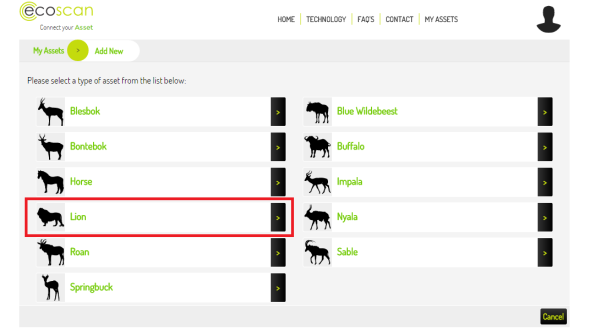 ECOSCAN is a system that Ukutula Lion and Research Center uses to sell animals on to buyers. Ukutula Lodge has also implemented into their terms and conditions one of the following rather interesting rules:
ECOSCAN is a system that Ukutula Lion and Research Center uses to sell animals on to buyers. Ukutula Lodge has also implemented into their terms and conditions one of the following rather interesting rules:
- Buyers must agree to the animal being chipped that both ECOscan and Ukutula Lodge monitor.
However what Ukutula Lion and Research Center do not tell you is that the buyer once they breed that Lion, them cubs are immune from this system. So after birth has taken place Ukutula Lodge has then distanced themselves from the questionable buyer. Meaning its “more than likely that hunting is occurring”. Lastly on checking with South African lawyers no buyer of any Lion from Ukutula does not under any circumstances have to agree with Ukutula’s terms of policies/agreements Etc. A very crafty move by an alleged Lion Research Center, one of which the public cannot easily trace that buyer too. Please view image below and click on the image to view which British Travel Agency supports it, alternatively please click >here<
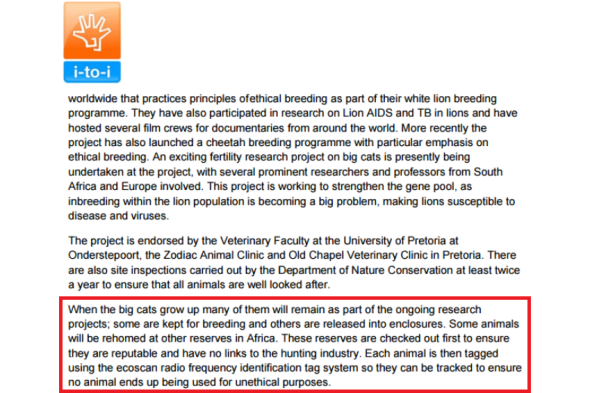
Image: Volunteer Travel I-I UK supports Ukutula Lodge that Blood Lions called into question.
Last month the South African Non Governmental Organisation, Blood Lions called into question Ukutula Lodge that refused to allow the Blood Lions team onto their property to investigate claims in relation to canned hunting. To read more on that subject please view the link below:
http://www.bloodlions.org/us-volunteer-speaks-out-cubs-hired-for-parties-and-events-ukutula/
The last thing we ever wanted to be forced to do was to begin exposing the petting industry at an angle that sees us exposing those that directly contribute to the industry that has skyrocketed over the past ten years. Unfortunately we’re being forced too. We’ve provided more than enough facts, accounts, and evidence. What or more to the point how much more evidence do students, tourists and volunteers really require?
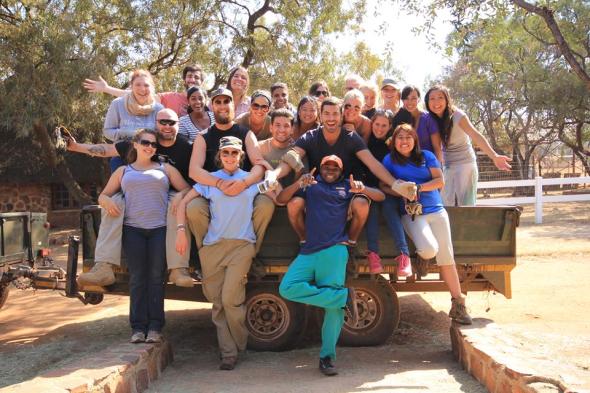
Image: Students at the Living with Big Cats Project.
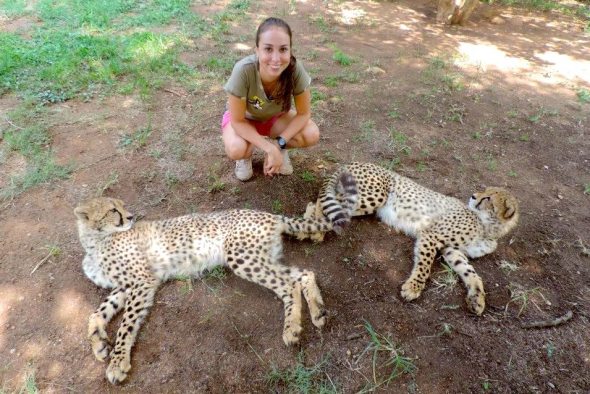
Image: Student at the Living with Lions Project.
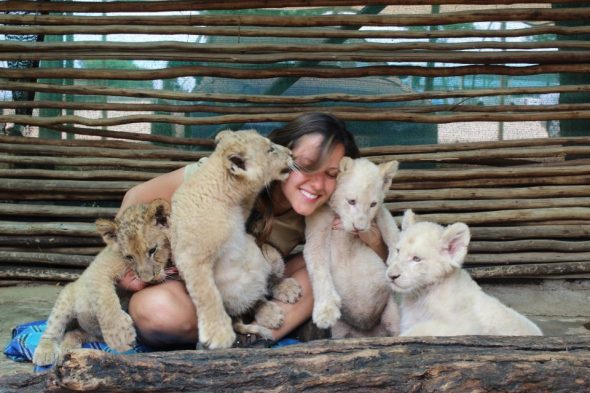
Image: Student at the Living with Lions Project.
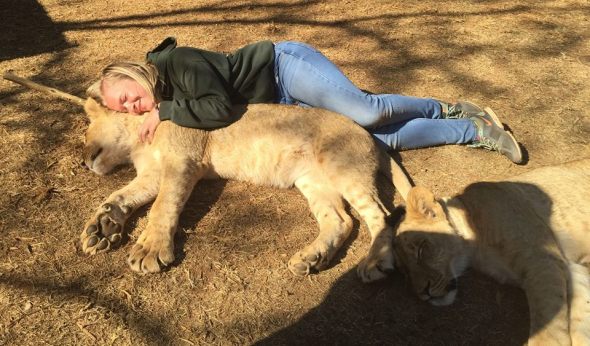
Image: Student advertised on the UK Travel Firm Amanzi Travel UK.
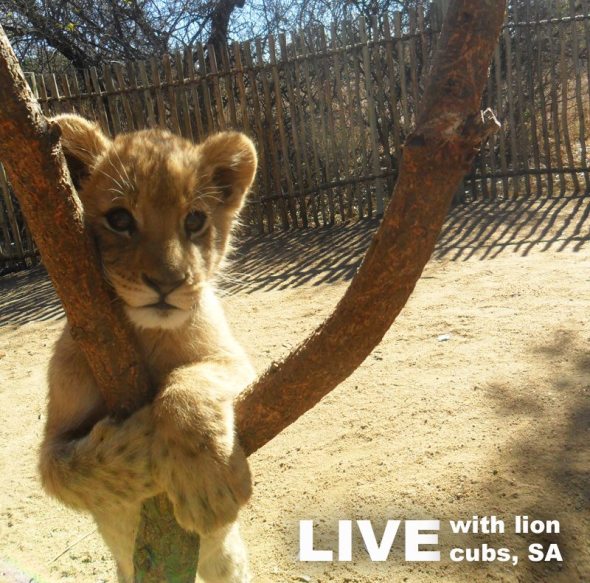
Image: Lonely cub advertised for petting at the I to I Volunteering UK agency.
No money the public spends to pet or take photos with cubs ever goes to support conservation in the wild. In fact, the opposite is true. There is a huge and growing market for Tiger and Lion parts, and Tiger and Lion “derivatives”, i.e. products made out of Tiger and Lion parts like Tiger and Lion bone wine. A dead Tiger/Lion is worth up to $50,000 for its parts. Breeding what US Fish and Wildlife Service calls “generic” Tigers like the ones used in the mall exhibits is not tracked, similar to ECOscan system used by various lodges and parks in South Africa. So there is no way to know how many born Tigers/Lions are killed to have their parts illegally sold into this trade. And, the more that trade expands, the more incentive the poachers, hunters and farmers have to kill Tigers and other big cats in the wild and via hunting within South Africa. Yes sadly, farmers and lodges, parks and alleged “living with big cats programs’ will sell after hunting (in some if not all cases) bones on to the Asiatic market to double their money. All supported by you the volunteer, tourist and student.
RECAP:
The cubs used for petting exhibits/farms Etc are torn from their mothers shortly after birth, causing emotional pain to both the cubs and the mothers. Imagine what that mother experiences after enduring the long pregnancy and finally giving birth, filled with the instincts to nurture her cubs, and then having them snatched away. The breeders take them away and have people handle them so the cubs will “imprint” on the people instead of doing what is natural and imprinting on their mothers.
And what is life like during the months they are used to make money for their owners? Cubs this age want to roam, explore, test their young muscles to develop coordination, and sleep for extended periods of time without interruption. Watch what happens during these exhibits. The cubs are repeatedly awakened so a customer can pet them instead of being allowed the sleep their young bodies need. When they try to wander they are repeatedly yanked back. And where are they when not on exhibit? Well I’m sure you can answer that question. A nursery maybe? Possibly, without the mother that is pining for her young? Just because its a cozy looking nursery means nothing.
Thank you for reading.
Dr Jose C. Depre.
Chief Environmental Officer and CEO;
PhD. MEnvSc. BSc(Hons) Botany, PhD(NeuroSci) D.V.M. Environmental & Human Science
Environmental and Animal Rescue Investigations Chief Officer.
Contributing to Extinction: The Petting Scam.
THE BIG CAT DEBATE PART III
“Conservation is not Petting Cubs or Promoting the Petting Industry”
Over the past week and a half we have been investigating some nine conservation organisations and companies aligned to them organisations within South Africa. As of yesterday we began to make public them questions which were legitimate and fully above board. We have given two related companies known as Your Cheetah Spot and Ukutula Game Lodge over twenty four hours to answer the questions set out here on Facebook within this article. Any professional organisation that isn’t involved within the direct petting or game hunting of threatened species one would then think such questions would quite easily be answerable to place public faith into the domain. Unfortunately within the past hour it seems otherwise.
Your Cheetah Spot a photography and alleged merchandise company, and what appears to be an organisation that is directly aligned with the promotion of petting cubs has not only failed to answer more than straightforward questions, but has evaded them by attacking us with silly nonsense seen hereto. Now we weren’t pointing fingers, nor was we accusing which can be read in all of our posts on Facebook hereto.
While we respect that Your Cheetah Spot is indeed a company their main Facebook imagery and online articles states otherwise. In the image below one can clearly see that the Your Cheetah Spot company is in someway aligned with the recently brought into question Ukutula Game Lodge, that appears to have some two or more Facebook pages online. International Animal Rescue Foundation Africa is a company and not charitable. Meaning that we work for our money. From 2012 to 2015 we have become increasingly suspicions in relation to over ninety South African organisations being “conservation and hunting”.
We equated that over R8.9 BILLION (ZAR) has been pumped into all of the ninety hunting and conservation organisations. However we’ve seen little if any conservation work, reduction in species threat status, reduction in anti poaching or increase of any species they are directly working with in the wild. As we are not a charity but indeed a giver 1/2 of these organisations fell within our (Funding African and Asian Wildlife Survival) program. While we have not provided monetary income to Your Cheetah Spot or Ukutula Game Lodge, we have directly and indirectly promoted their services or organisation[s] (2013-2014). That in turn has technically brought our company into disrepute in regards to malpractice and public misinformation, furthermore it was somewhat more embarrassing that members of the public also pointed this out to us too, and not forgetting some twelve key conservation experts.
The image below shows that both Your Cheetah Spot and Ukutula Game Lodge are related in one way or the other.
Ukutula Lodge does go under other names of Facebook too such as Ukutula Game Lodge Etc. On viewing Your Cheetah Spot company we were somewhat concerned with the vast amount of small cubs that are in our eyes being petted by the public, or by the staff in general from which we believe is at the Ukutula Game Lodge. Please view the images below. Please also note that it has been alleged that some of these animals are “sick and unwell” and cannot be released into the wild. We our now bringing that into question.
The male in the image above is known as a wildlife photographer and conservation researcher, of which he also with his students, friends and family helps at the Cheetah Research Center, while meeting up with members of the public at the Ukutula Game Lodge or Ukutula Lodge. When putting questions to Scottish born Alan Strachan and the user on the Your Cheetah Spot Facebook page we was then made aware of the current unprofessional behavior of Ukutula Game Lodge. Its at this very lodge that our suspicions have yet again arisen, of which you can view in the images below.
Interestingly when viewing more data on Ukutula Game Lodge we were somewhat perplexed as to how many big cats this farm is currently holding of which it states “is research”. Even more worrying is that the vast majority of these cats are/or were all cubs, all of which are being bred on a “game farm”. Please view the data below.
Now just to remind the millions of readers that tune into our environmental investigations news site what a game farm is, we have made it very simple to read and understand for you to come to your own conclusions. Please see the image below.
A further suspicion that was then immediately raised by the External Affairs investigative team was the vast majority of friends on Mr Strachan’s Facebook friends list that are all (holding or petting) cubs, yet there seems to be no mothers in sight, please see the image below.
The list is pretty endless of which you can view more here
Any good professional conservation teacher, conservation organisation, research center, or reserve would not under any circumstances allow the direct petting of any big cat cubs. The potential for virus and disease to emerge and not forgetting the removal of the cats natural hunting instincts would severely be detrimental to the animals health. So on viewing the two parties being that The Ukutula Game Lodge and Your Cheetah Spot company that boasts years of experience then why are we seeing such behavior? Furthermore on questioning Your Cheetah Spot company they categorically stated that they hadn’t released any animals in to wild since [2007]. Yet they also stated to the CEO that they were just a simple photography and gift company.
International Animal Rescue Foundation Africa asked some nine very basic and straight forward easy to answer questions. The organisation has waited and waited, the questions were stern but not abusive. However it would appear that on asking such straightforward questions “Your Cheetah Spot company” has not only become abusive but have shown just how hateful of homosexuals they are (again clutching at straws and trying to turn the table onto us). See the screen shots below.
So when basic very polite questions are asked not only are we spat at with trolling nonsense from hunters and deluded pseudo activists whom have created these articles in the image above, the Chief Executive Officer is then spat more abuse at insinuating that he is gay and obviously goes under many other names too. And as yet, still there is no answers to our questions.
Linda whom runs the Facebook page Your Cheetah Spot stated that the vast majority of these animals cannot be released back into the wild. The kind lady also stated that many animals are sick or injured. Furthermore Linda stated that there is not enough room to simply release Cheetahs back into the wild within South Africa. As a more than competent and professional environmental company there is room, and there are also many active reintroduction programs over the border. In our own opinion these animals are not being released as then that would mean a loss of revenue. Furthermore if these animals are being bred for science, what happens to them after the research is up. Lastly as you may all remember Cecil? Cecil was one of many Lions that the Oxford University Lion Research Center studied, oddly IN THE WILD!
Reintroduction programs have been very operational within Swaziland for some years. Furthermore South Africa is not detached from the continent. Bordering you have Botswana, Namibia, Zimbabwe, Mozambique and finally Lesotho with Swaziland in the far right. So the excuse that these “many small cubs” that are new born and are most certainly not sick, old, injured (in most cases) cannot be reared in accordance to a professional captive breeding program is utter nonsense. Just to remind you - Linda whom is aligned with the You Cheetah Spot company stated that the last release was back in 2007 of any Cheetahs which we do believe was in the KWN.
A further concern is that Linda stated Alan Strachan (experienced photographer and author) has many contacts within the Cheetah Breeding theater, see image below.
The comment above is just a contradiction of what is being viewed at the Ukutula Game Lodge of which Alan Strachan visits regularly such as “you have to make sure that there is very little contact with humans” “The last prey release was back in 2007”. If these contradictions do not spring up red flags to you then they should. Swaziland has been the center for many Cheetah releases over the years as listed on the International Union for the Conservation of Nature’s website. Furthermore the sheer fact that in the vast majority of Mr Strachan’s images on his Facebook profile that depict “cub petting” and on their very own Facebook page is also somewhat concerning.
THE LIES BREEDING AND RESEARCH CENTERS TELL YOU
Below is a list of common lies or misinformation breeding, research and farming centers will try their utmost best to tell you. However at the end of the day its down to you to undertake your own research. Why are there so many cubs, why have there never been any releases of animals into the wild, why are there never no mothers seen with the cubs, why did the breeder or the supporter of a breeder state that these animals cannot be released back into the wild in South Africa..The simple answer to that question would be (mass loss of profit). Again we’re not putting words into your mouths, we are though asking you to please open your eyes, question, look around.
Breeders who charge the public to pet and take photos with young tiger, lion, cheetah or leopard cubs tell venues and customers some or all of the following ‘misinformation which is’:
1) That the exhibitors are “rescuers” and operate “sanctuaries”
2) That the cubs have a good life while being used to make money:
a) They enjoy being carted around the country in a semi and repeatedly awakened and handled by dozens of people all day
b) That blowing in the cubs face “calms” them down
c) That dangling them by holding under their front arms and bouncing them up and down “resets” them cubs at the mall
Cubs at the mall always = cub abuse
d) That close up photos with flash does not harm the cubs
3) That it is safe for the cubs and for humans, and legal, to allow contact with cubs from when they are only a few weeks old to when they are six months or more old.
4) That the exhibitor must keep constantly breeding and using the cubs to make money because that is the only way he can support the adult animals he keeps.
5) That the exhibitor is doing this to promote conservation in the wild.
6) That the exhibitor is teaching people not to have exotic animals as pets
And the biggest lie of all:
7) That the cubs will have good homes after they get too big to be used to make money from petting.
The images and evidence that is seen on one of the nine alleged conservation organisations that are either directly or indirectly involved in the promoting of petting or in this case “science and research”. Have shown little evidence of anyone of these animals actually being released into their native wild.
We DO NOT buy the excuse that states there is little room in South Africa to release these animals back into their native wild. Africa is a continent and South Africa is most certainly not detached from neighboring countries. South Africa borders Botswana, Namibia, Zimbabwe, Mozambique, Lesotho and Swaziland. Swaziland is one country of particular interest as many Cheetah reintroduction programs are happening within this country. The Cheetah Spot company also made public that Mr Strachen has many contacts with “Cheetah breeders” so why are we not seeing reintroduction, but more ‘petting’ of which these images are directly promoting the petting industry which in turn directly promotes the canned and non-canned hunting industry.
If you would like to know more about felid petting one can view the link here supplied by the Big Cat Rescue.
So as our questions haven’t been answered then we’ll reprint them here in a more orderly and professional fashion. On hitting the publish button the news letter will be sent to over 2,000 subscribers and over 6.1 million supporters respectfully.
- What relation does Mr Strachan and Your Cheetah Spot company have in relation to the Ukutala Game Lodge?
- Why are there so many cubs being shown on the Ukutala Game Lodge and Your Cheetah Spot company that are not unwell but more than healthy?
- Why are there so many cubs with no mothers being petted at the Ukutala Game Lodge, and where are their mothers?
- What happens to the cubs being shown on the Your Cheetah Spot company and Ukutala Lodge when you have reached maximum holding capacity?
- From reading, Your Cheetah Spot company states its nothing more than a photography and merchandise company. The company stated that they have only managed to release some Cheetahs into the wild back in 2007. So from 2007 to date you’ve obviously been in contact with more cubs, so how many animals are you holding on this farm, and where are the excess going too, one cannot just continue breeding and not releasing they are obviously going somewhere?
- Are you Ukutula and Your Cheetah Spot company involved in game or canned hunting?
- Why are you “Your Cheetah Spot” company directly encouraging through photography the petting industry but then contradict yourselves by stating that these animals must have the bare minimal human contact?
- Are both Your Cheetah Spot company and Ukutala Game Lodge aware of the health implications to these animals via the direct handling, man-handling and petting of cubs and elders?
- Why does the Your Cheetah Spot company that stated 1. They are just a merchandise company then 2. agreed they are working directly with these animals believe that South Africa is the only country that these animals can be released into?
- Will you Your Cheetah Spot company and Ukutula Game Lodge make public the amount of animals that you have allegedly helped, released into the wild and how many have been deliberately bred?
- Why when questioned did you not answer the questions highlighted but then some 14 hours later placed untrue, derogatory and misleading data into the public domain asking people to share. When all we did was obtain the information from your own sites, your own staff, friends and online data? No professional organisation or individual would behave in that manner?
- How much money are Your Cheetah Spot Company directly making from petting big cats and cubs?
- How much money are Ukutala Game Lodge making from the direct petting of big cats and cubs, and where is this money going too. Why are you also promoting the “interaction with very healthy cubs” to foreign tourists of which is commonly known as a “Lion Petting Farm aka Hunting Industry”?
The next time you want to abuse us you may want to remember that we are not propagating misleading lies about you. The data above has derived directly from you. All we have done is placed that all together, reviewed it and come to the conclusion that from questions 1-13 both of you are in some way directly involved in the petting industry which has direct relations to the hunting industry.
For now we’re going to leave our concerns at this. We will though be going through all organisations and individuals aligned with us and, if found to be exploitation any animals will be removed and exposed by us. Lastly when you have emigrated to our country please respect our natural heritage.
External Affairs Department
Environmental and Animal Abuse Investigations Authority Europa.
EXTERNAL AFFAIRS HEAD OFFICERS:
Jose C. Depre: Chief Executive Officer.
Johan Le roux: Anti Poaching / Illegal Animal Parts Trade Head Investigator.
Michal Jooste: Endangered Species Watch.
Pitier Van rens den: Chief Environmental Officer and Emergency Rescue.
Con in Conservation?
Contrary to popular belief native Africans were not the first people on the continent to pursue a career or “sport” of trophy hunting. The history of trophy hunting dates as far back to the early 1800’s when southern and central European hunters sought out large or small game. Not much has really changed since the early 1800’s although hunters did out of mutual respect show much veneration to their kill more than today’s modern hunters that flock to the continent of Africa from far and wide in their droves.
Southern and central European hunters were known to keep the trophy head or entire animal as a sign of prowess however did leave much waste of which little of that waste was provided to local villagers and communities struggling financially or in times of famine when free food was much sough after. Today most professional hunters (PH) or outfitters allege that their trophy kill’s are evenly distributed out to the local communities and villagers in dire need of food.
Today in most of Southern Africa we see a mixture of international citizens hunting animals from lion, elephant, zebra, cheetah, impala down to hippopotamus and plains game. The vast majority of hunters visiting the continent range from northern Europe where hunting has long been associated with their history. Back in the 1800’s northern European hunters within their native range would mostly hunt for meat and in Africa evidence has shown that the majority of northern European hunters do indeed demand their kill or any waste is equally handed out to local villagers and communities. After all its their tradition and a tradition in northern Europe that is steeped in history.
Sport hunting has long gotten up Animal Rights Activists noses which today’s hunting generation rarely follow any rule of the land or continue to practice the family tradition as if its a heirloom. Environmental researchers from the Environmental News and Media team have long argued now that western disrespect within today’s hunting generation is now rubbing off onto our own African citizens that have been witnessed killing animals then parading the parts of bodies of animals or jokingly fooling around with the corpse as if it was nothing more than a piece of shit on ones shoe.
One such hunter witnessed back in 2012 that our investigative team noted last year named as Mr Henning Pretorius from Krugersdorp Gauteng, South Africa didn’t just grotesquely slaughter this non-threatened Zebra below - he then set about jumping on the animals dead back jokingly fooling around and acting as if he was on some rodeo. Hardly professional hunting nor conservation. We will though give him his due respects where given of which the animal was slaughtered - however made into a rug for his own home. The meat was distributed among family members and friends which back in the 1880’s was uncommon.
Since Henning pretorius became aware of this image circulating Mr Pretorius not only demanded its removal but, has been given special cyber protection - I.e his profile has been blocked from the United Kingdom. We do find this move by Facebook rather peculiar as 1. we’re not British citizens or even residents and 2. why has he been given this rather suspicious preferential treatment? Did we touch a sore nerve. Mr Henning has also taken the rather unusual step of removing this image or at least concealing it amidst his other nauseating images that Facebook’s administration platform seems to be protecting.
Kalahri’s Historian on hunting and Animal Rights stated:
Trophy hunting is the most controversial aspect of hunting for opponents of hunting, who argue that modern economics or vegetarianism should eliminate the need for most killing of animals, if not animal domestication entirely.
They see such killing as an issue of morality, citing British fox hunting as an especially inhumane “blood sport.”
Hunting in North America in the 1800s was done primarily as a way to supplement food supplies. The safari method of hunting was a development of sport hunting that saw elaborate travel in Africa, India and other places in pursuit of trophies. In modern times, trophy hunting persists, but is frowned upon by some when it involves rare or endangered species of animal. Other people also object to trophy hunting in general because it is seen as a senseless act of killing another living thing for recreation, rather than food.
In all due respects Henning and Kalahari are nothing more than a CON in Conservation.
Africa holds the largest custodian of lions in the world. However their populations are dwindling quite rapidly. To date and based on the most recent up to date International Union for the Conservation of Natures report a population count of some 30,000 lions remain in the wild. Listed as vulnerable and nearing endangered they remain the second species within the big five that’s populations are actually declining. Central African elephant “populations” could be considered within this count too however based on census reports elephant populations within the central African republic are known to be “endangered” as a population not as an entire species.
The African lions main threat is that of habitat destruction and human species conflict with some reports of “unregulated hunting” as being problematic mostly within Tanzania. However while the IUCN lists certain dangers regarding the lion such as habitat destruction, persecution and unregulated hunting they fail to list the dramatic decrease of male African lions that are required within the prides to keep species intact. Continued hunting of males lion or even female lionesses will eventually have an adverse effect onto lion populations thus pushing this species into the realms of endangerment.
Environmental News and Media has duly noted from 2011 to 2014 a stark increase of eastern and southern European hunters visiting Africa to hunt the big five. Increases from Ukraine, Russia, Czech Republic, Poland, Romania, Slovakia, Serbia, Bosnia and Turkey have been noted. More worrying are increasing numbers of trophy hunters such as Jacine Jadreško from Croatia (pictured below).
Croatian, Albanian, Russian, Czech Republic and Polish trophy hunters are second to that of American hunters with British hunters slowly creeping up. While sport hunting is not currently considered a major threat to the species, habitat loss, a lack of prey and increasing conflict with humans are to blame for the decline in the numbers of African lions, whose numbers have dropped by two-thirds since the 1980s, according to 2014 USDA report. There were 76,000 lions in Africa in 1980, but that number has declined to about 30,000 today.
Zambia has since lifted the ban on hunting lions and cheetahs. The ban wasn’t lifted because lion and cheetah species populations began increasing but more for sustainable wildlife projects. In other words while the ban on hunting was in place funding to secure wildlife from poaching just didn’t hit the target - so - therefore Zambia has limited the ban to generate funding to preserve its natural wildlife.
A Con or practical thinking?
Environmental News and Media’s External Affairs Investigations Dept noted a stark and worrying increase of youth hunters to the continent too. Most African countries hold certain rules in place the forbid a minor under the age of sixteen from carrying or even shooting a loaded rifle. As one can see in the case below this is not so. From Howick, Kwazulu-Natal laws are being flouted daily.
Con or gun conservation?
A further worrying trend were witnessing in South Africa are tiger farms springing up everywhere in the Eastern Cape - for the gun. From 2012 to 2014 Environmental News and Media recorded a total of 63 tiger farms in the Eastern Cape. Since 2012 a further 21 have been established. Tigers are listed as critically endangered - yet are bred and for the gun.
One of the world’s largest and most iconic predators may soon go extinct in the wild - yet in South Africa the species are being bred for for the bloody gun!
Amid all the fuss over global warming and alternative energy, the continued loss of biodiversity is being largely overlooked and forgotten. And the trend may claim its highest profile victim to date in just a couple decades, say conservation groups. For at least a million years tigers have roamed the forests and jungles of Asia, ruling the top of the food chain. But today Tigers are facing a final bow from the world they once ruled as their habitats have been destroyed and their numbers slashed by poaching.
At the start of the twentieth century there were an estimated 100,000 tigers. Over the course of the last century those numbers shrank and several subspecies — the Bali, Javan, and Caspian Tigers — went extinct.
The WWF has released a new report estimating that there are now only 3,200 tigers left in the wild in India, Southeast Asia, Russia, and China. They estimate that within a generation tigers will become extinct in the wild, if drastic action is not taken to conserve them.
Sybille Klenzendorf, director of the WWF-US species conservation program comments, “There is a real threat of losing this magnificent animal forever in our lifetime. This would be like losing the stars in the sky. Three tiger subspecies have gone extinct, and another, the South China tiger, has not been seen in the wild in 25 years.”
World Bank, a multinational financial institution that provides loans to developing countries, is partnering with the WWF in a push to save the beasts.
Keshav S. Varma, program director of the World Bank’s Global Tiger Initiative comments, “Unless we really crack down on illegal trade and poachers, tigers in the wild have very little chance. If the tigers disappear, it is an indication of a comprehensive failure. It’s not just about tigers. If you save the tiger, you are going to save other species. It provides an excellent indicator of commitment to biodiversity. If they survive, it shows we are doing our job right. If they disappear, it shows we are just talking.”
Despite the fact that so few tigers remain, demand for their body parts is at an all time high on the Asian black markets. Crawford Allan, director of TRAFFIC-North America, which monitors the trade in wildlife, comments, “The demand for bones and skin, meat, and even claws and teeth … is driving a major crime campaign to wipe tigers out in the wild.”
Lixin Huang, president of the American College of Traditional Chinese Medicine has teamed with the WWF to try to fight Chinese natives from using tiger parts in their traditional remedies. States Huang, “Traditional Chinese medicine does not need tiger bones to save lives. What we are dealing with is an old tradition, an old belief that tiger wine can make their bones stronger. That is not medicine, that is from old tradition.”
The WWF’s ambitious goal is to try to get the tiger population doubled to 6,400 tigers in the wild by 2022. To do that, they say they will need $13M USD a year and cooperation from the governments of Bangladesh, China, Europe, India, Indonesia, Nepal, Russia, the United States, Vietnam, and the Greater Mekong region, which stretches across Cambodia, China, Laos, Myanmar, Thailand and Vietnam.
Nearing extinction in the wild - Bred in captivity in South Africa for the gun.
Hardly Conservation is it?

